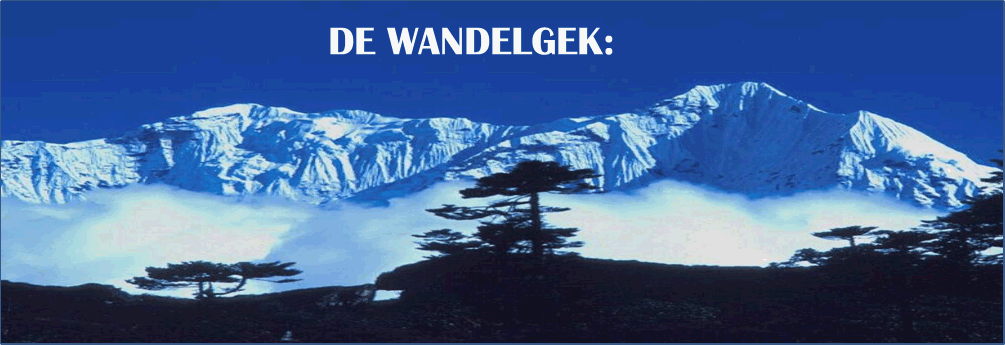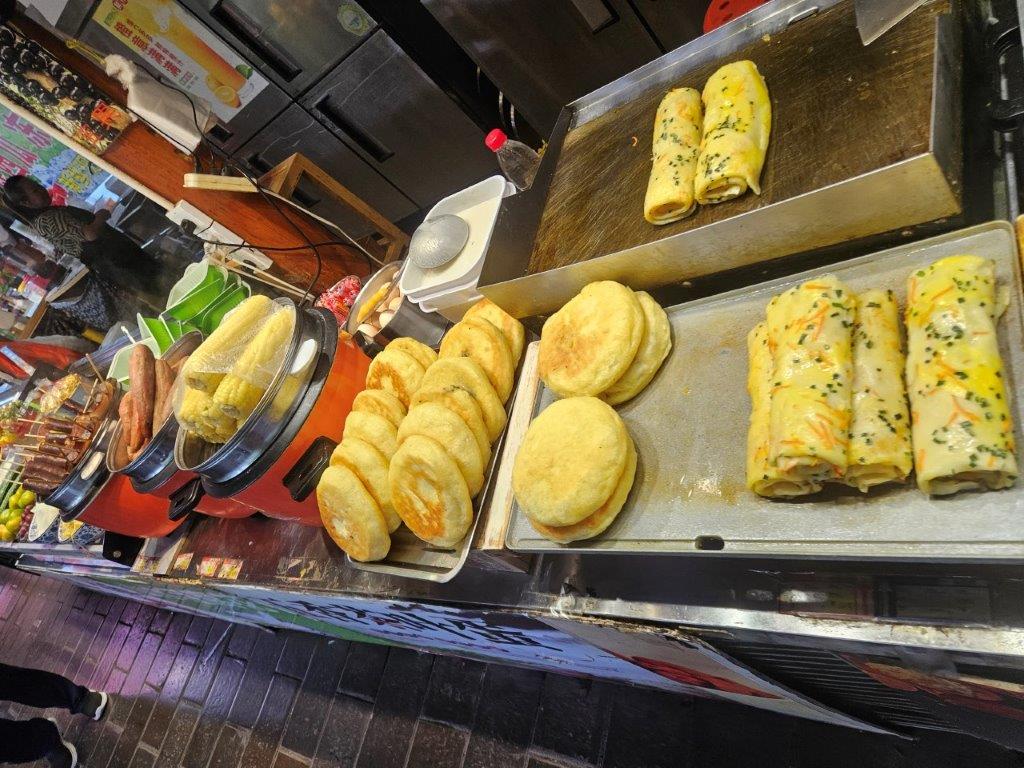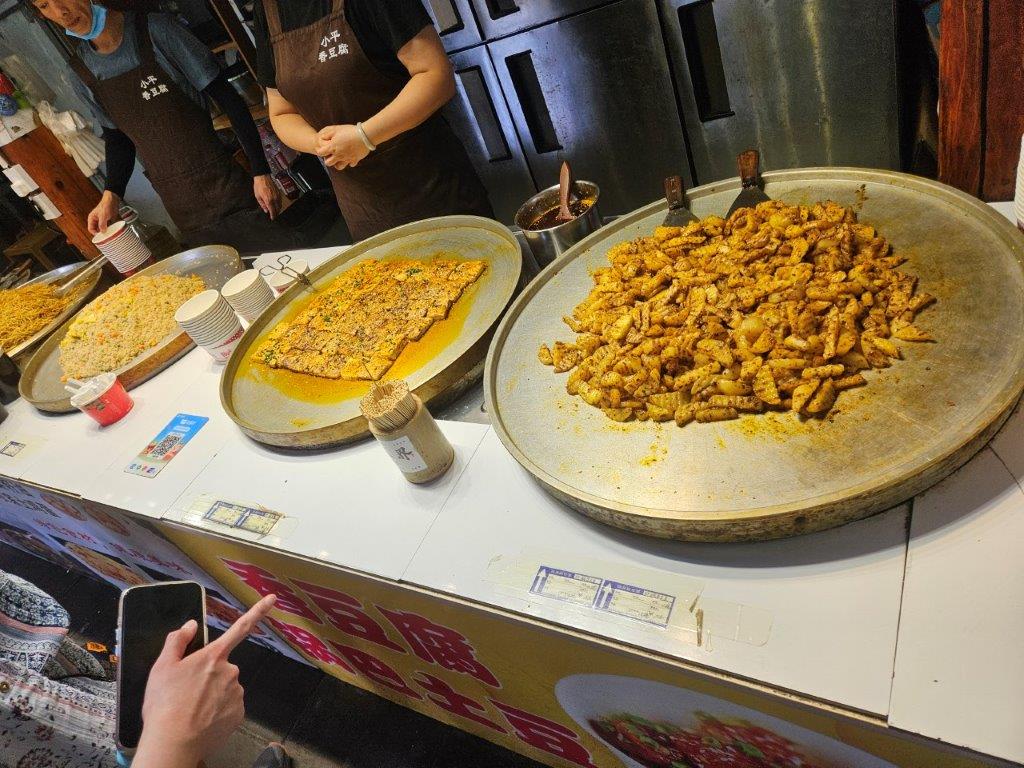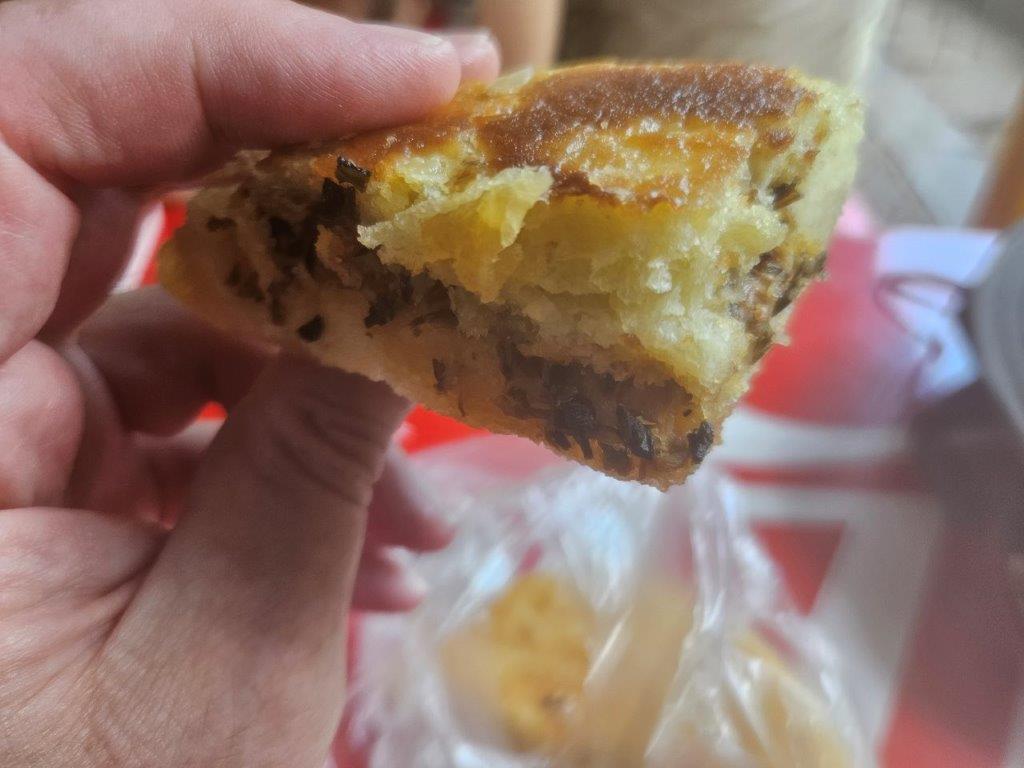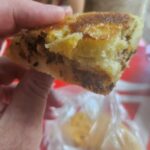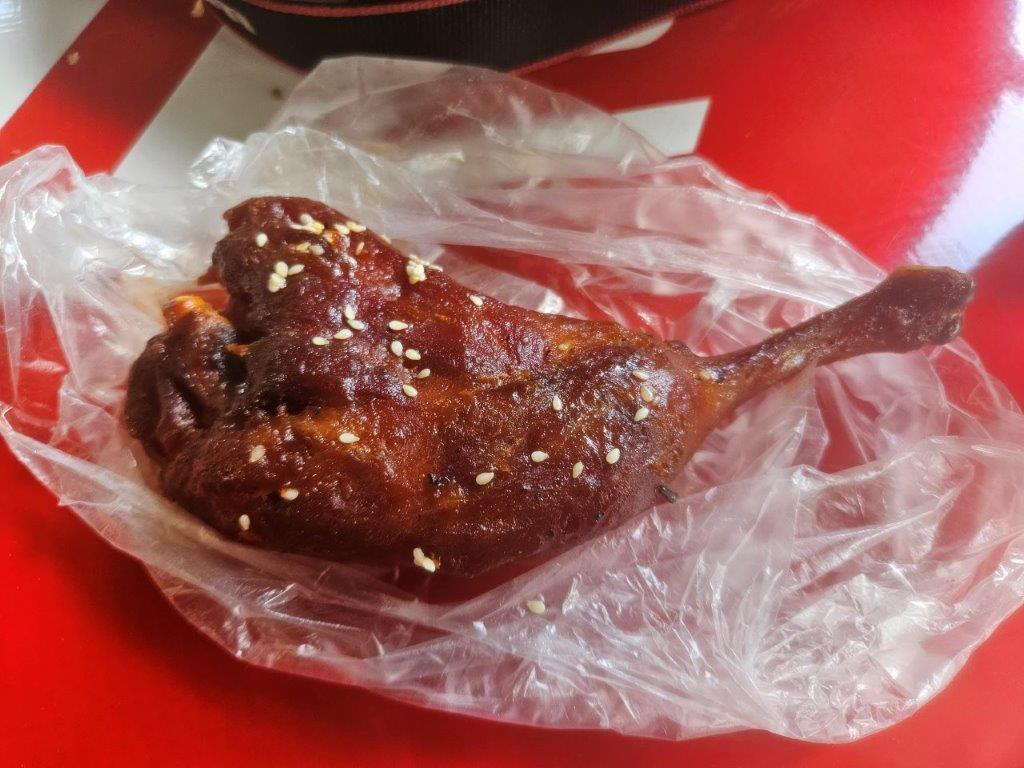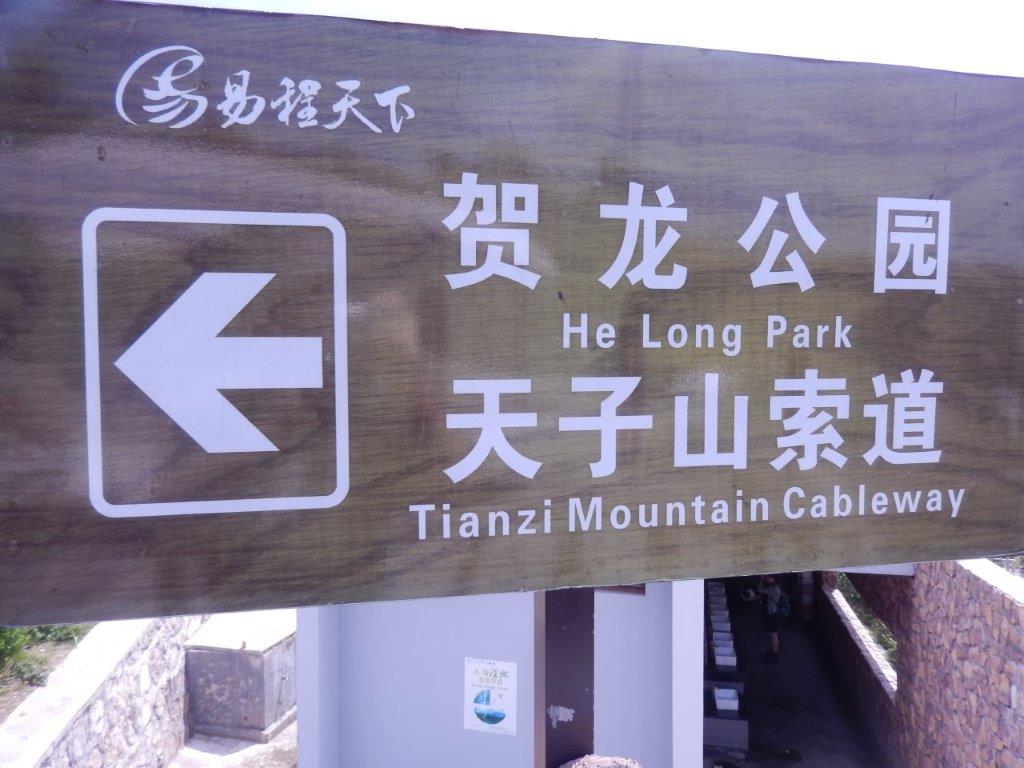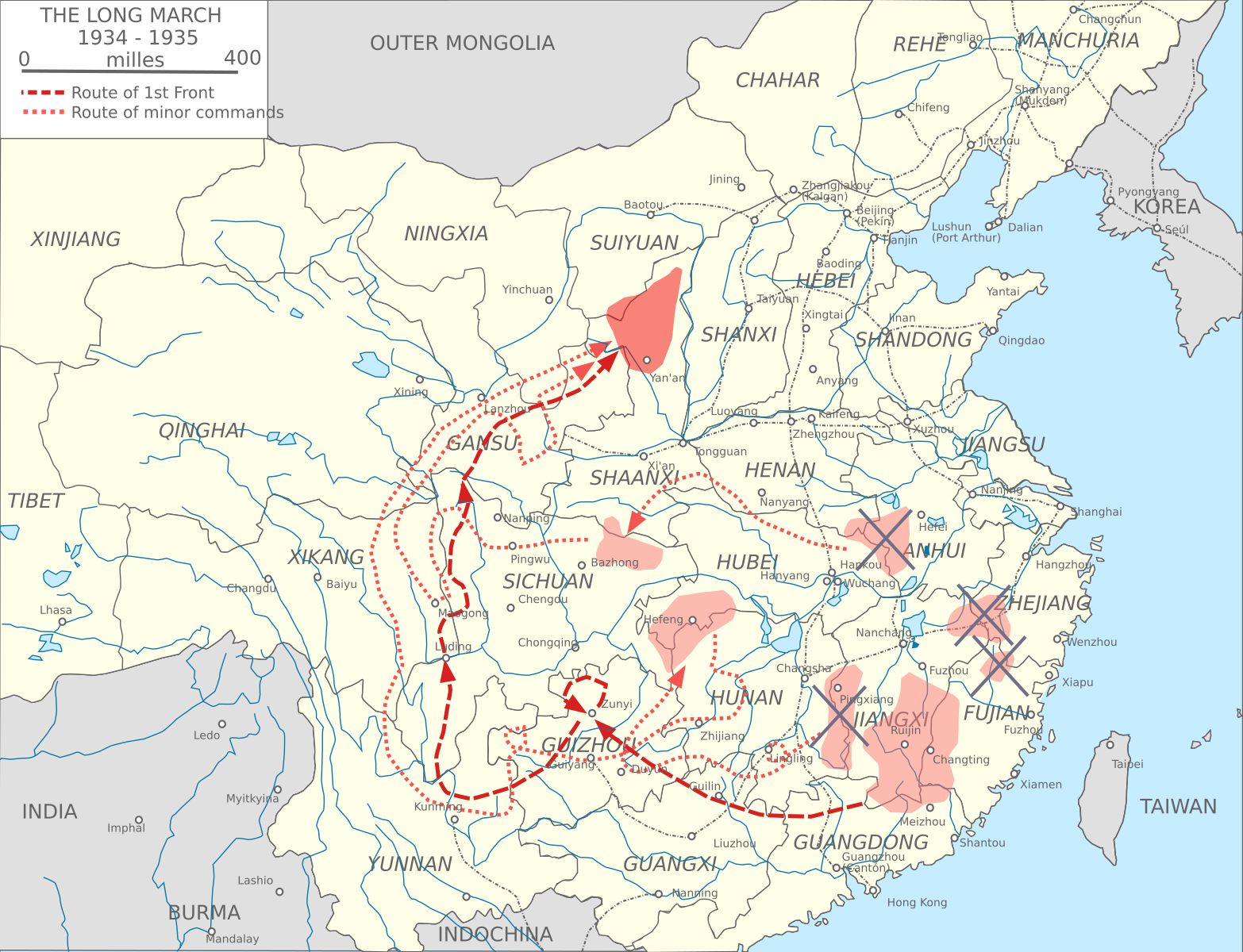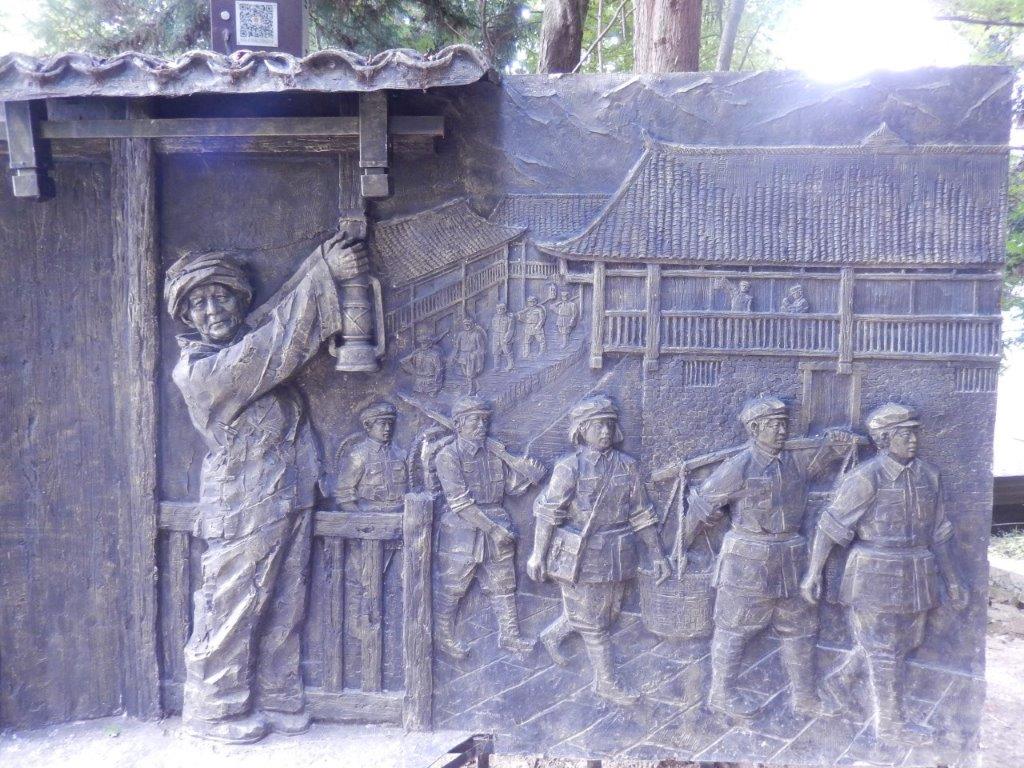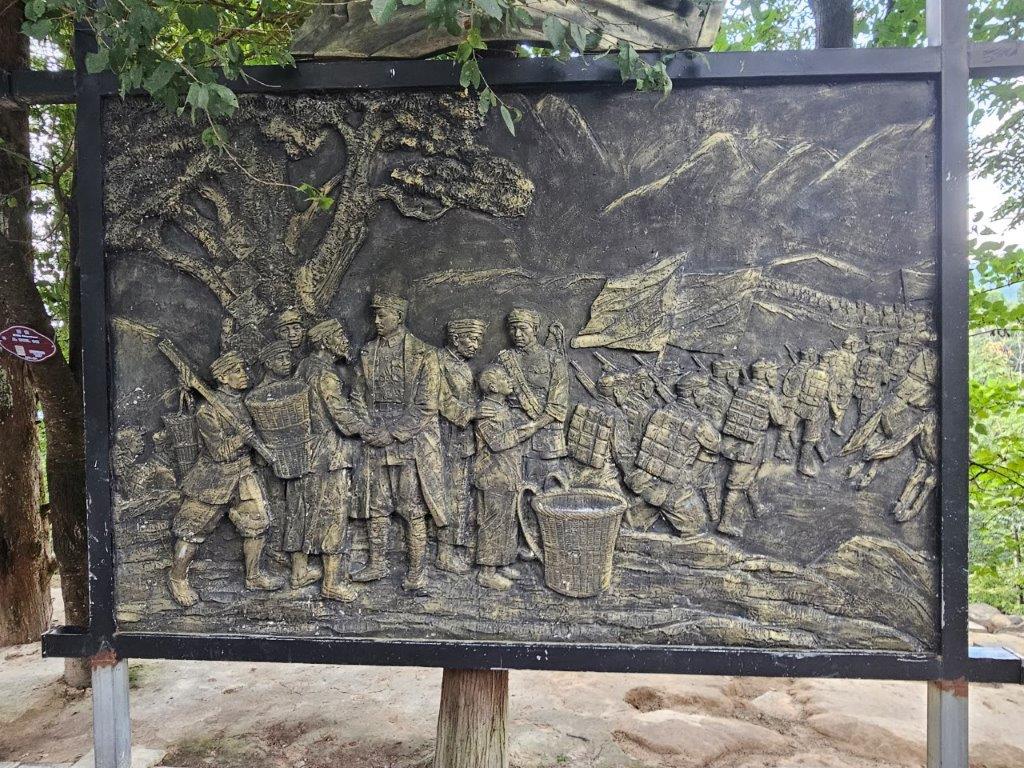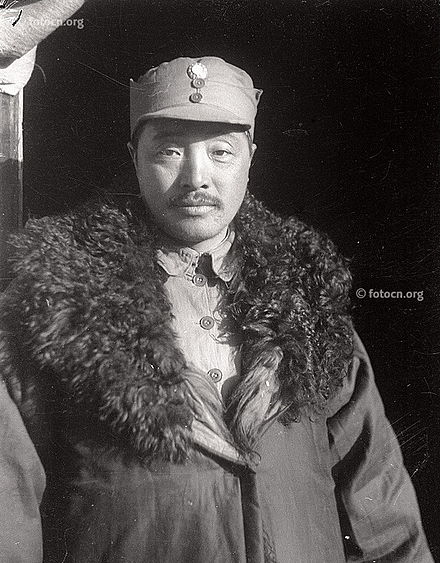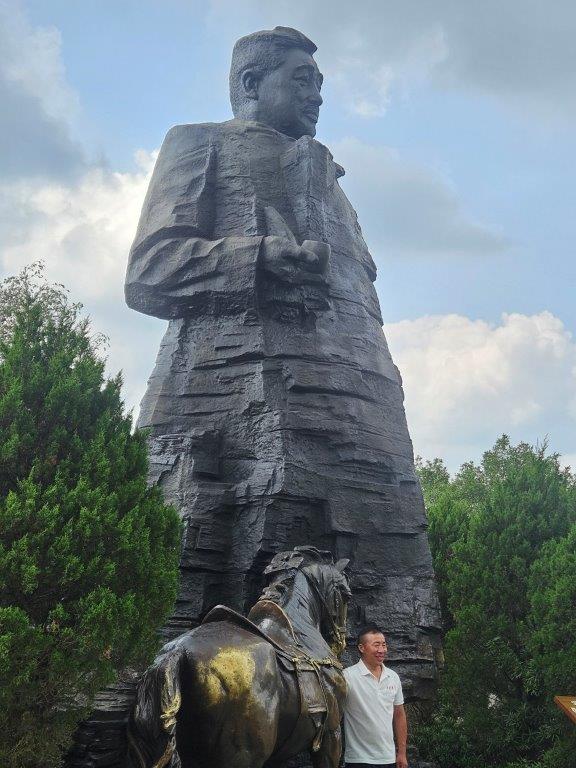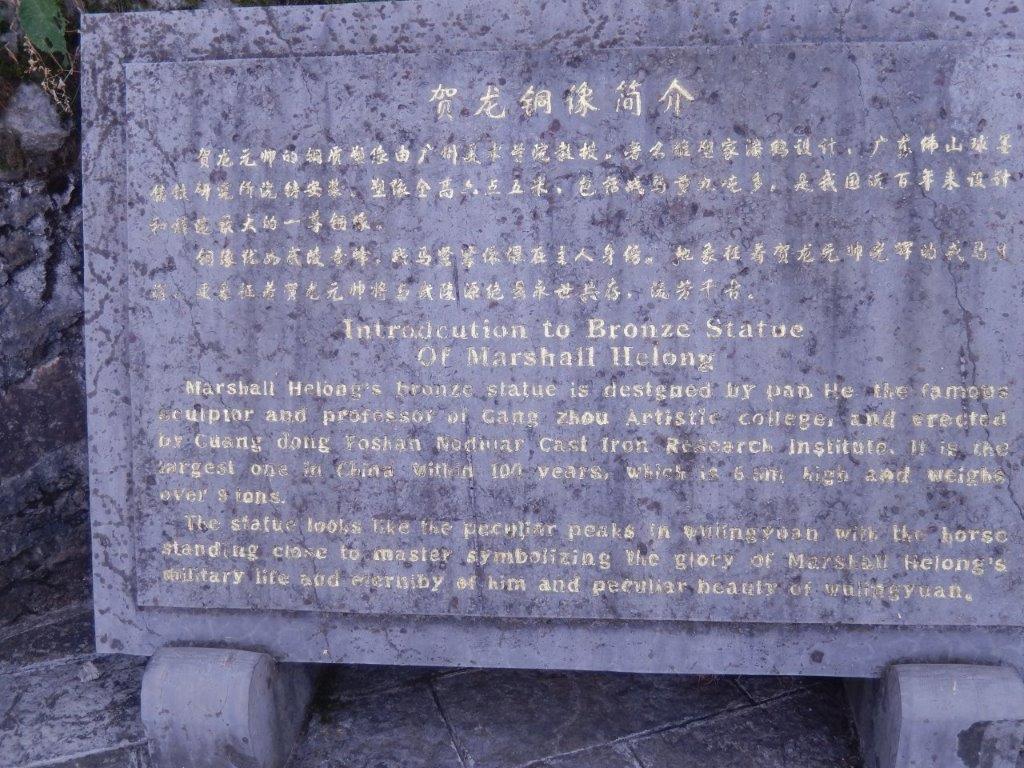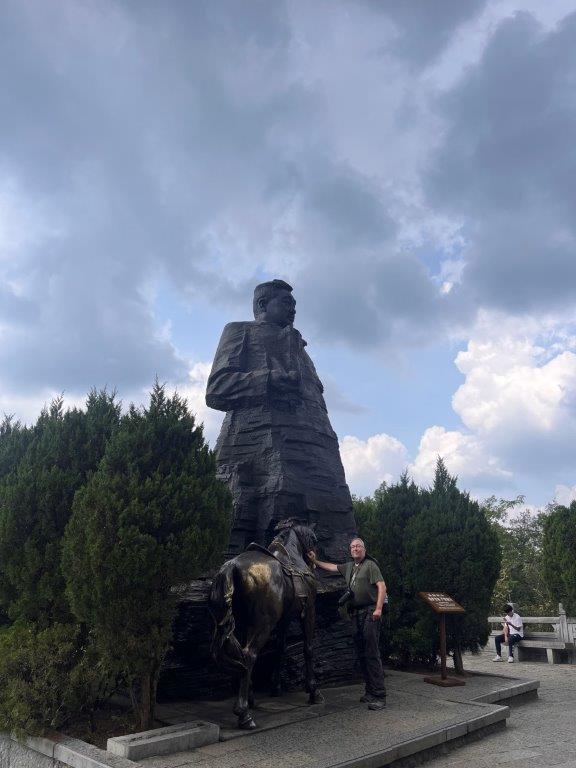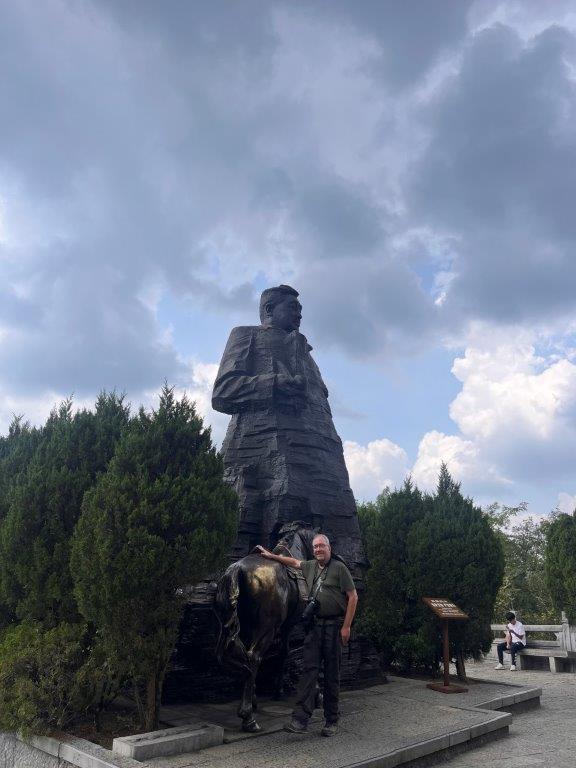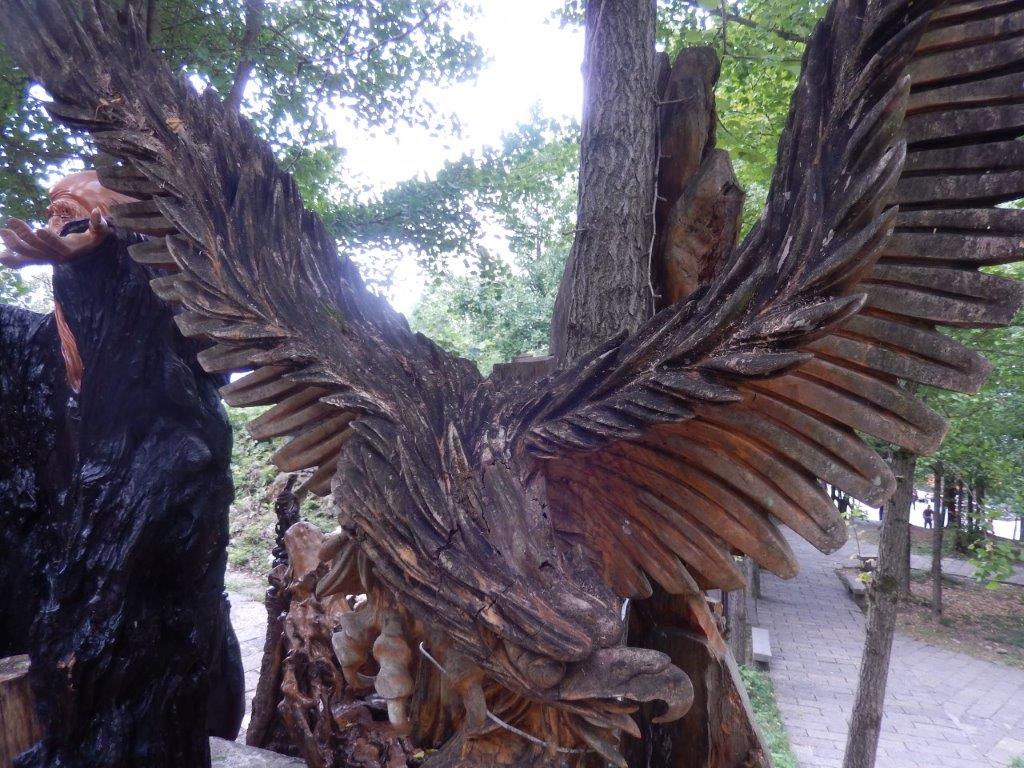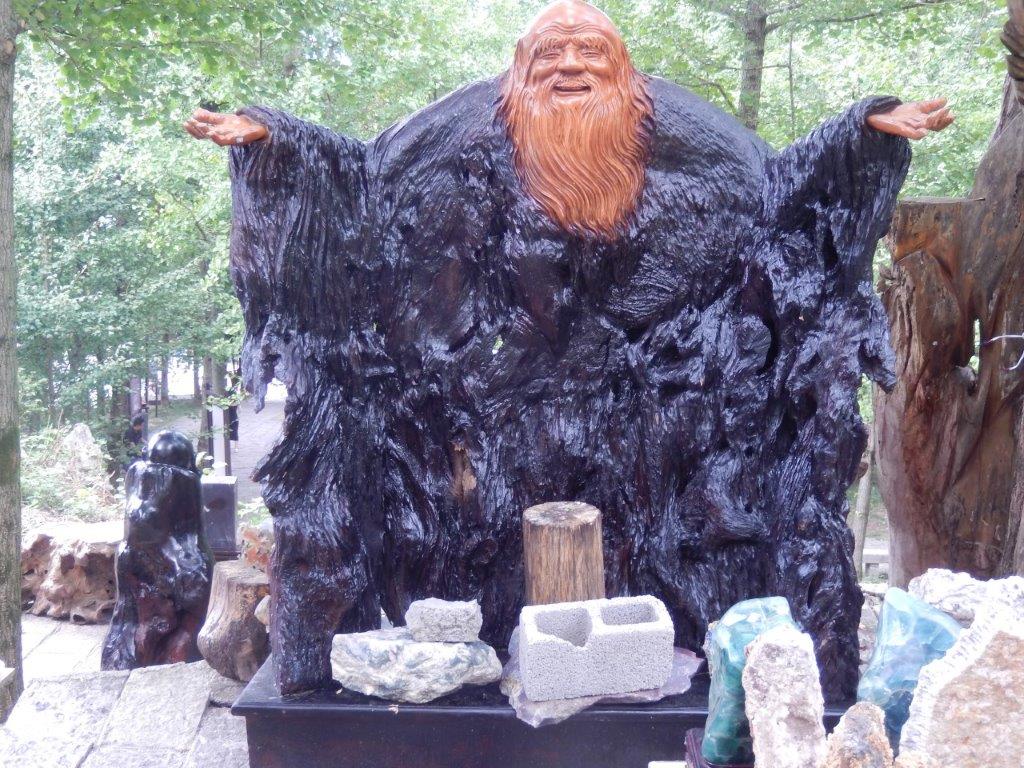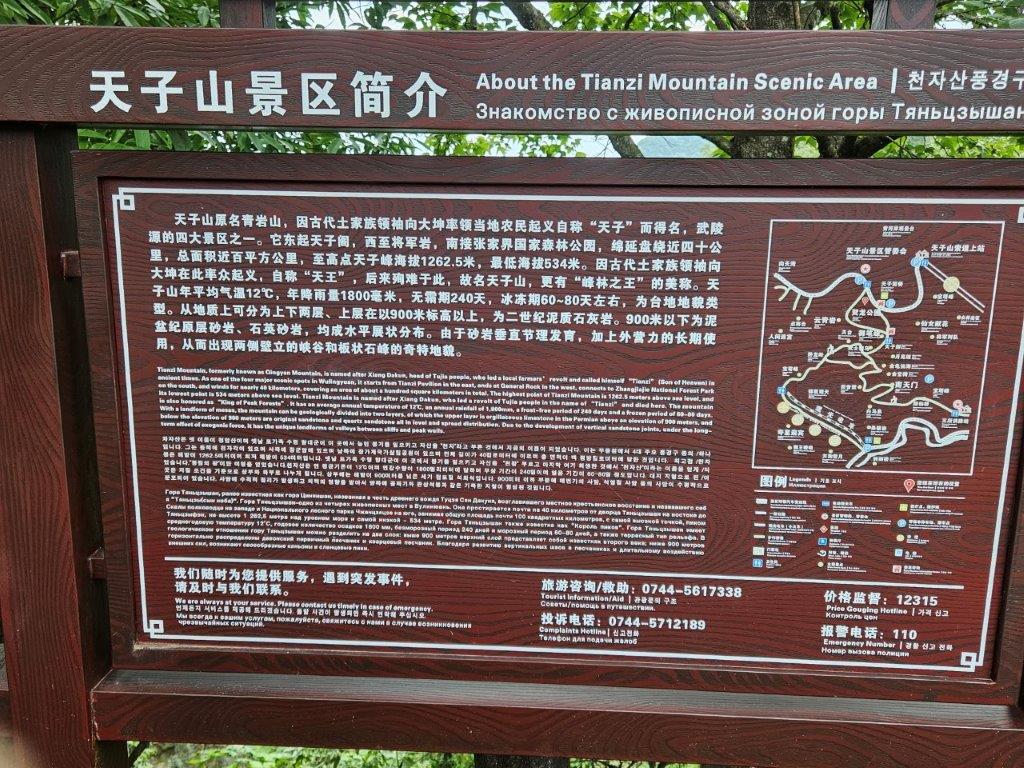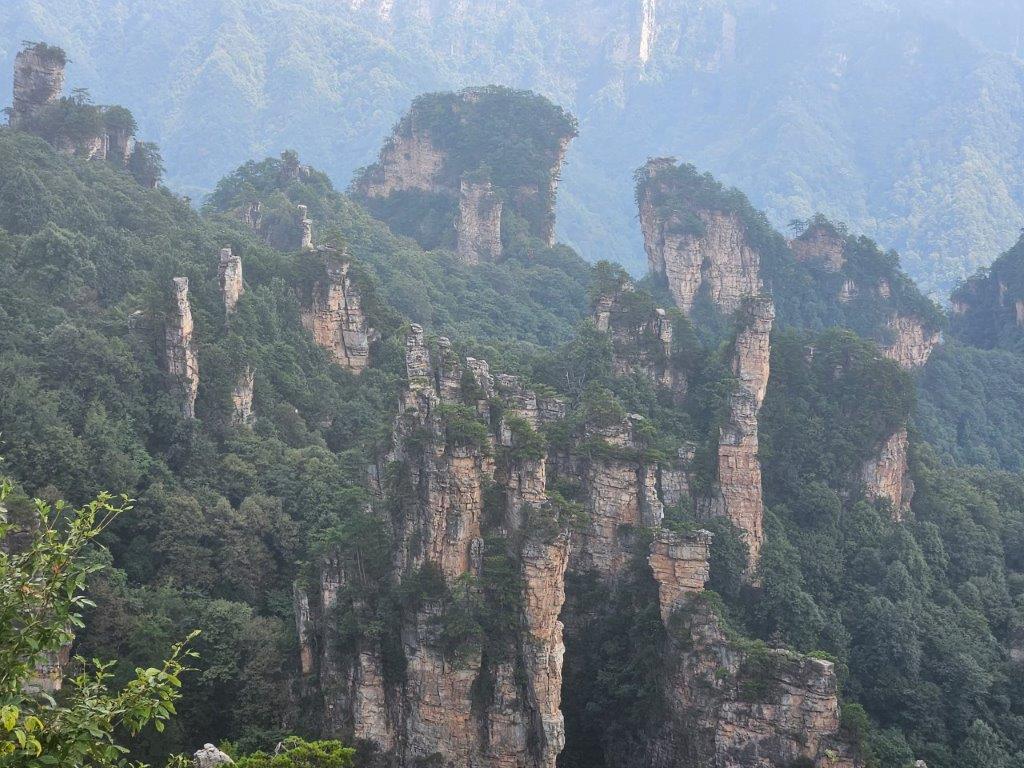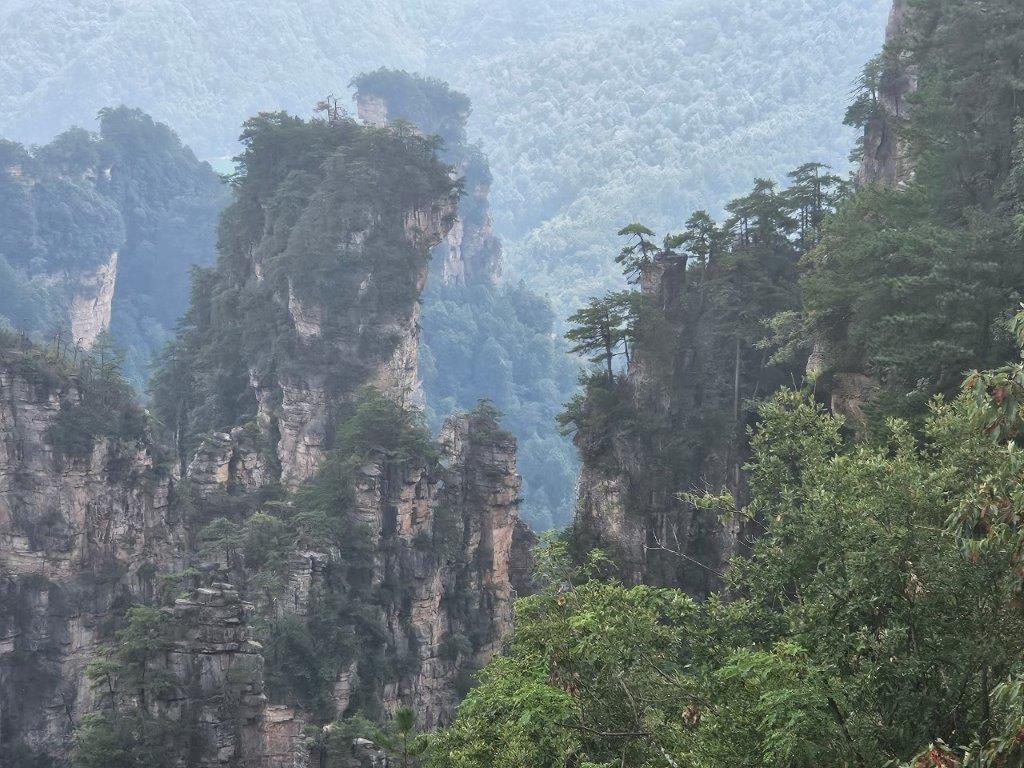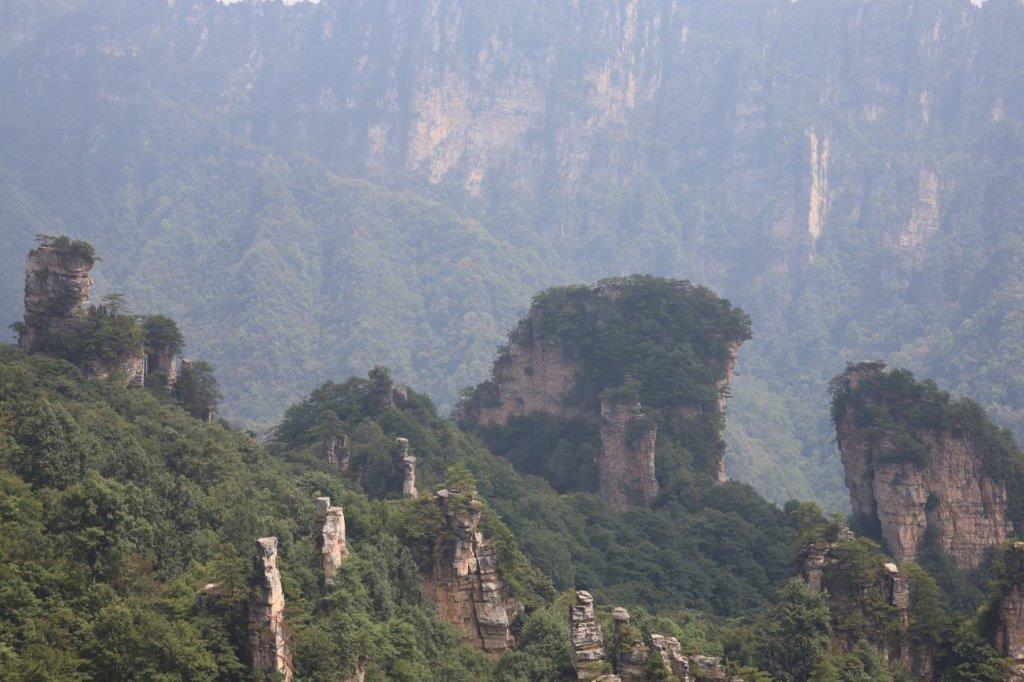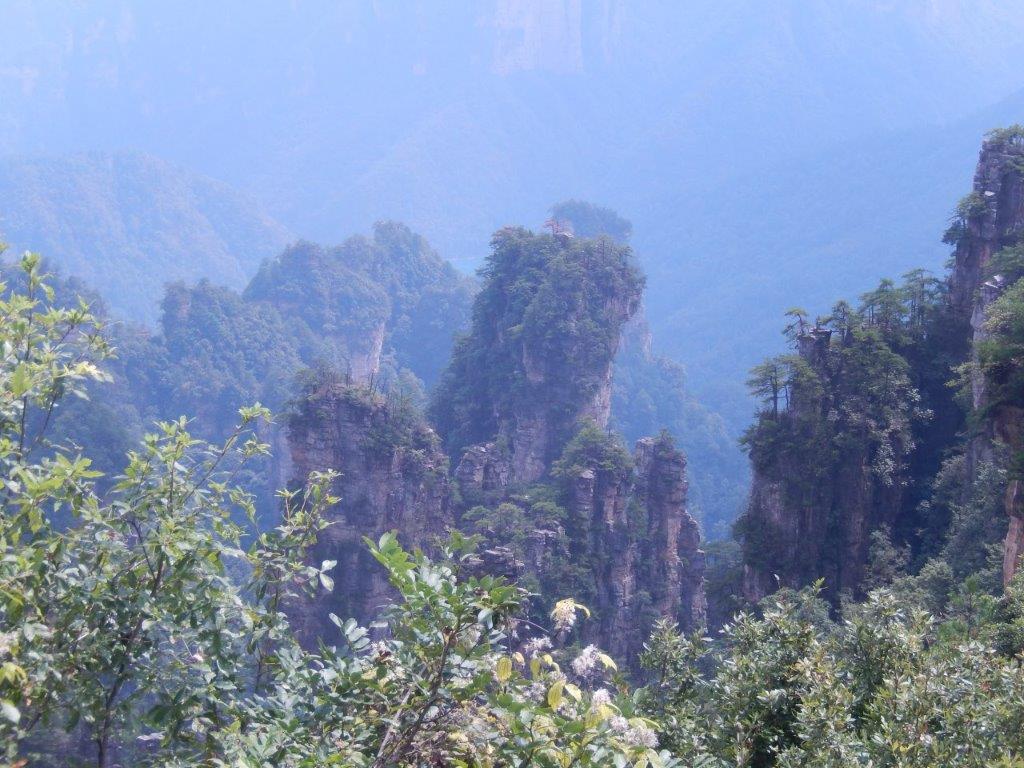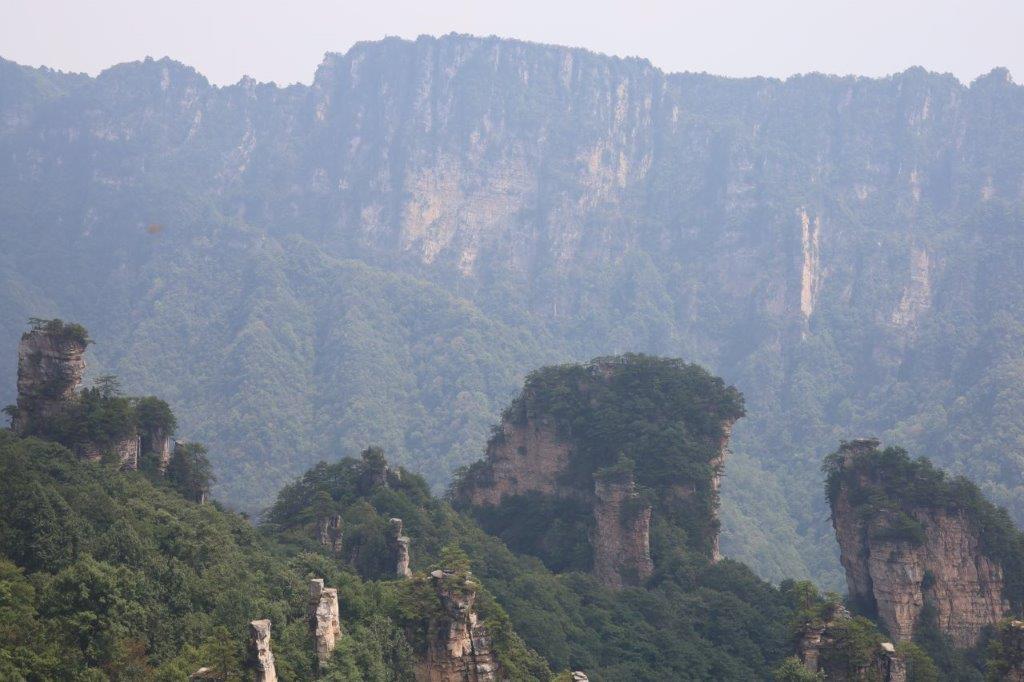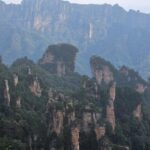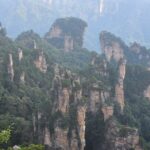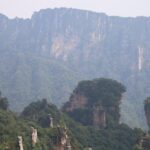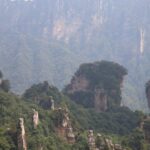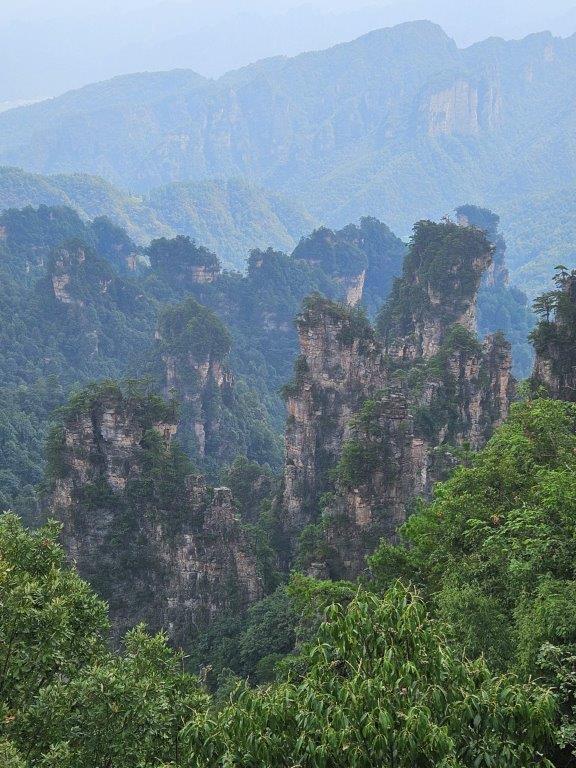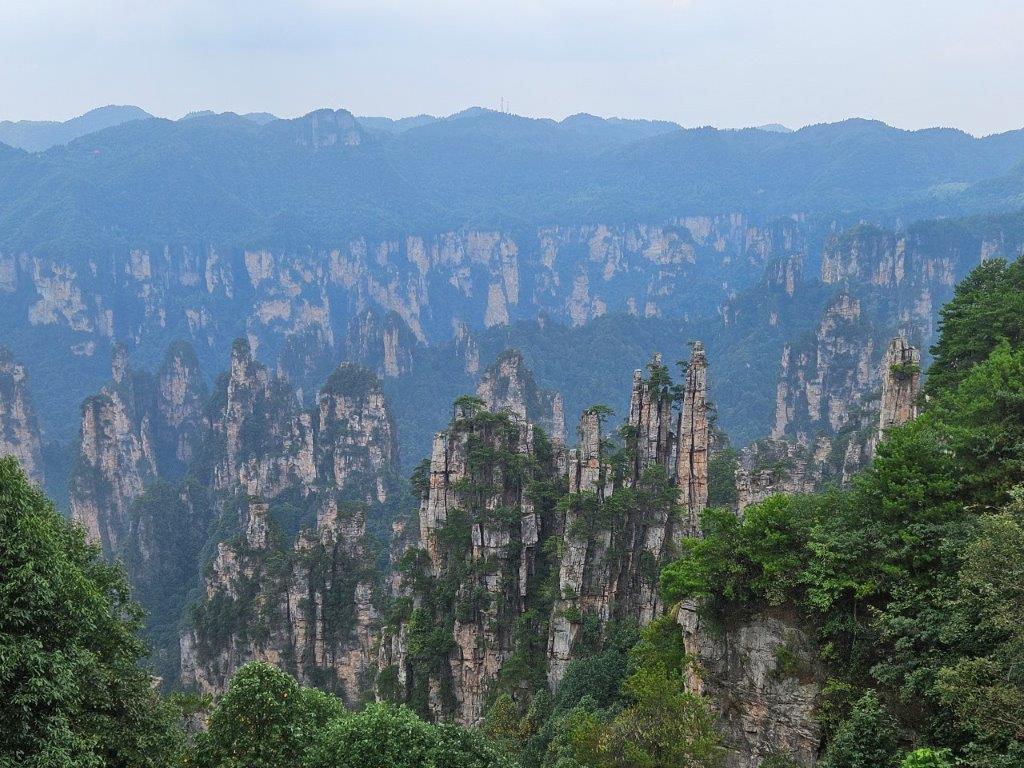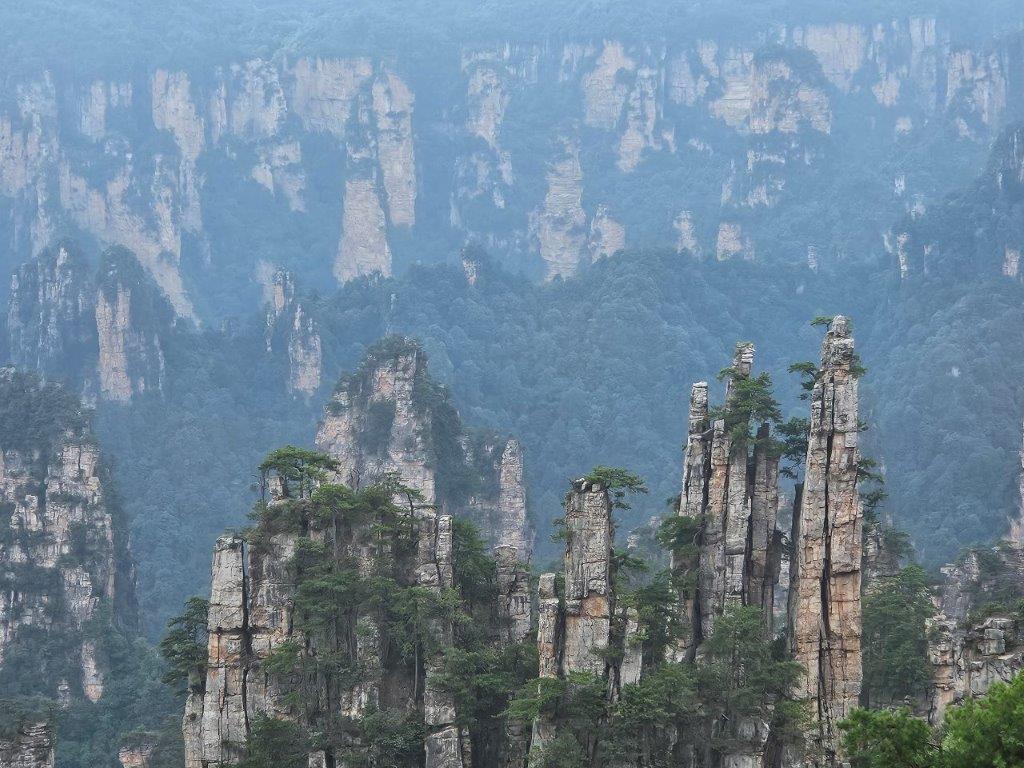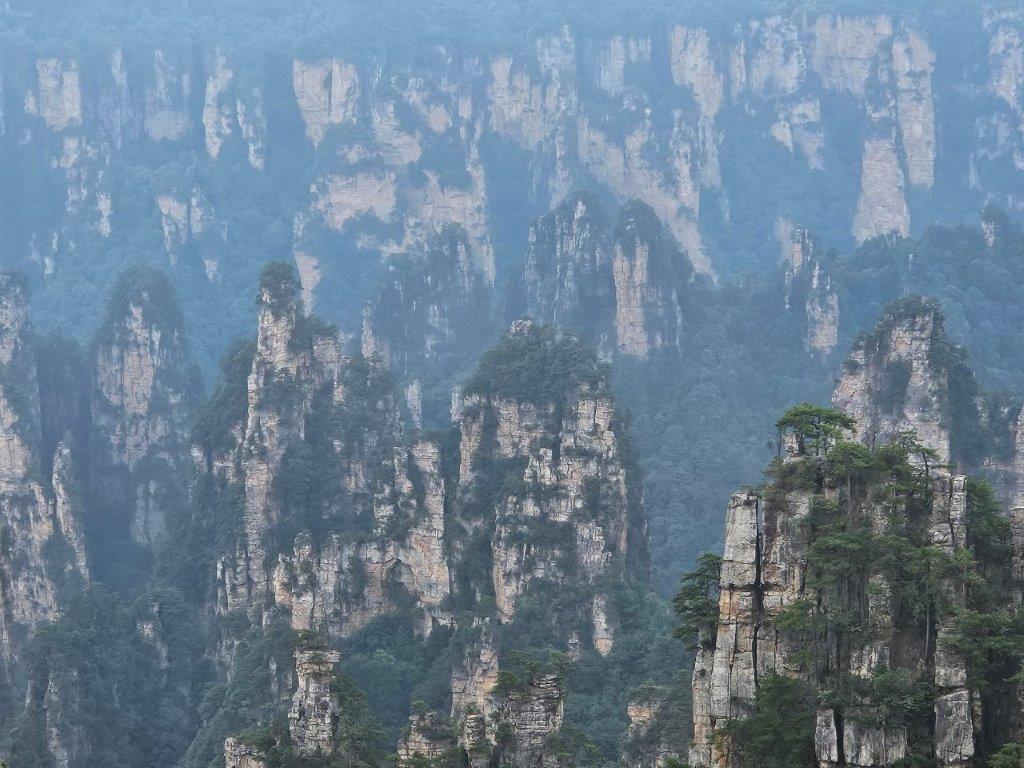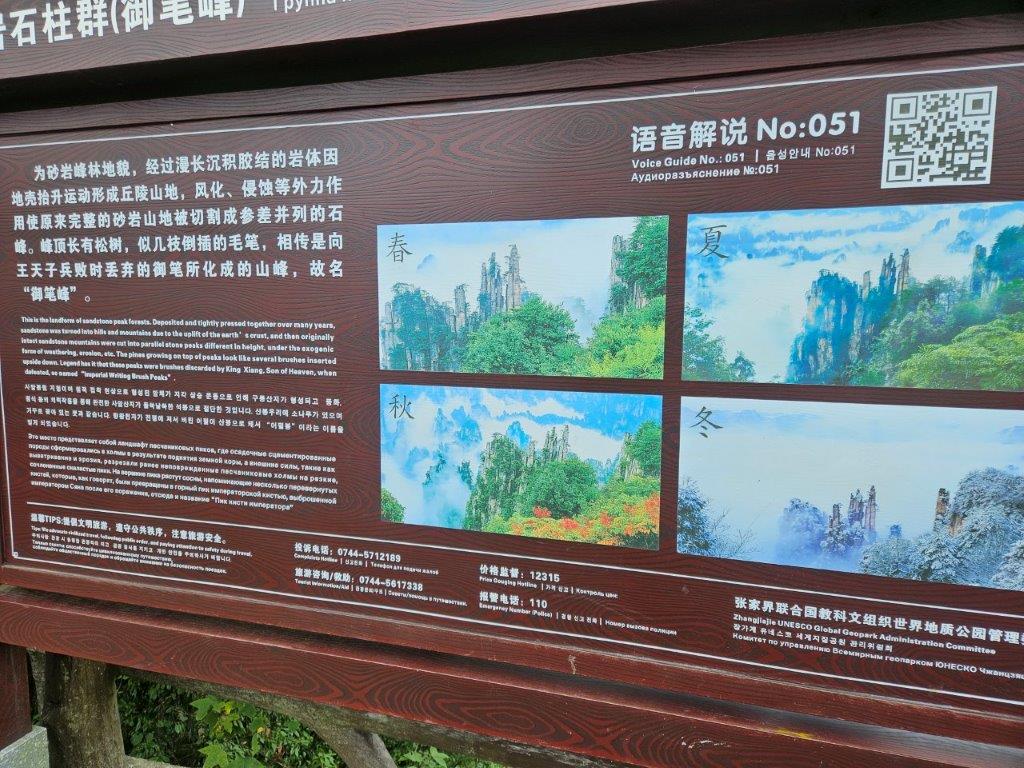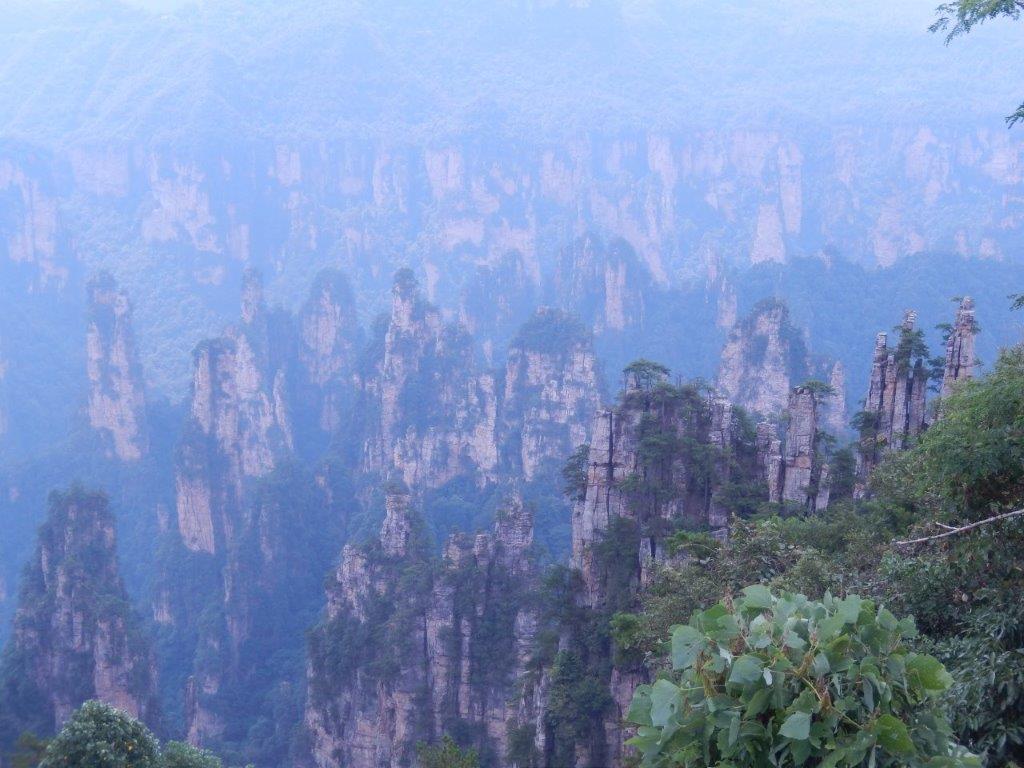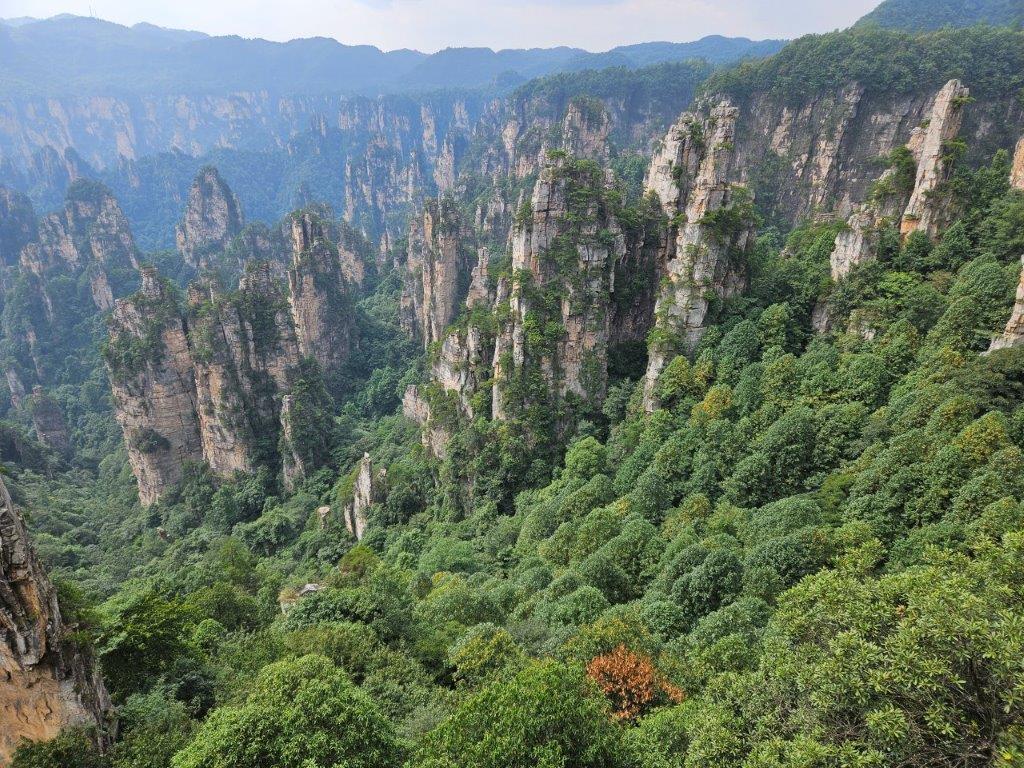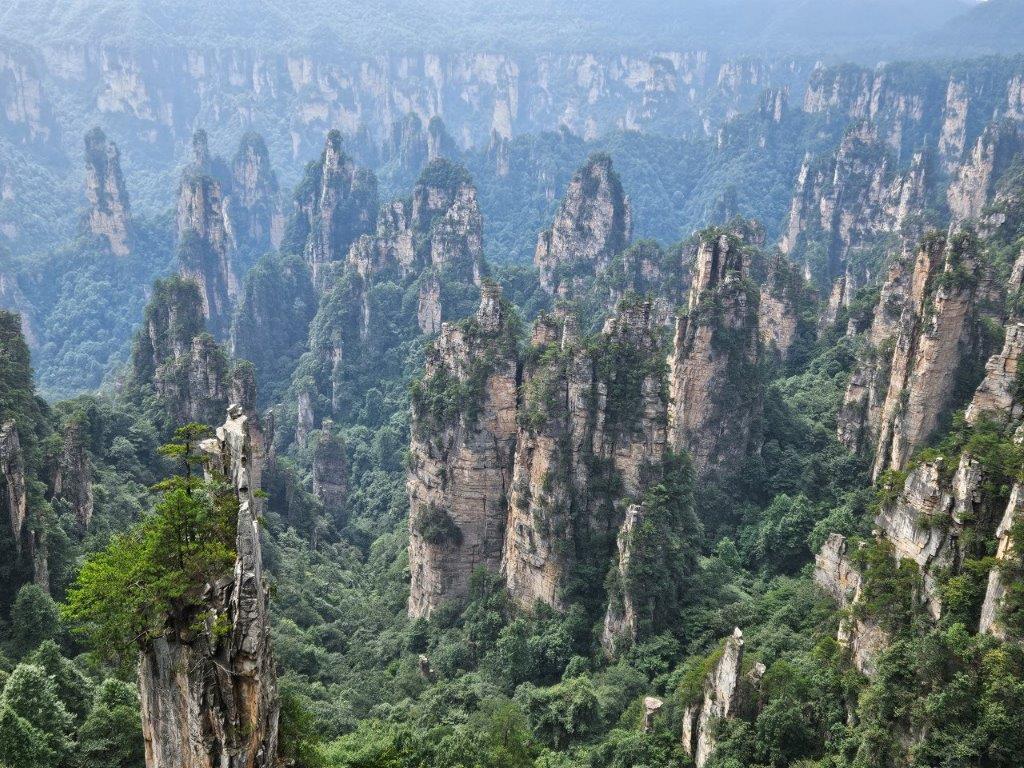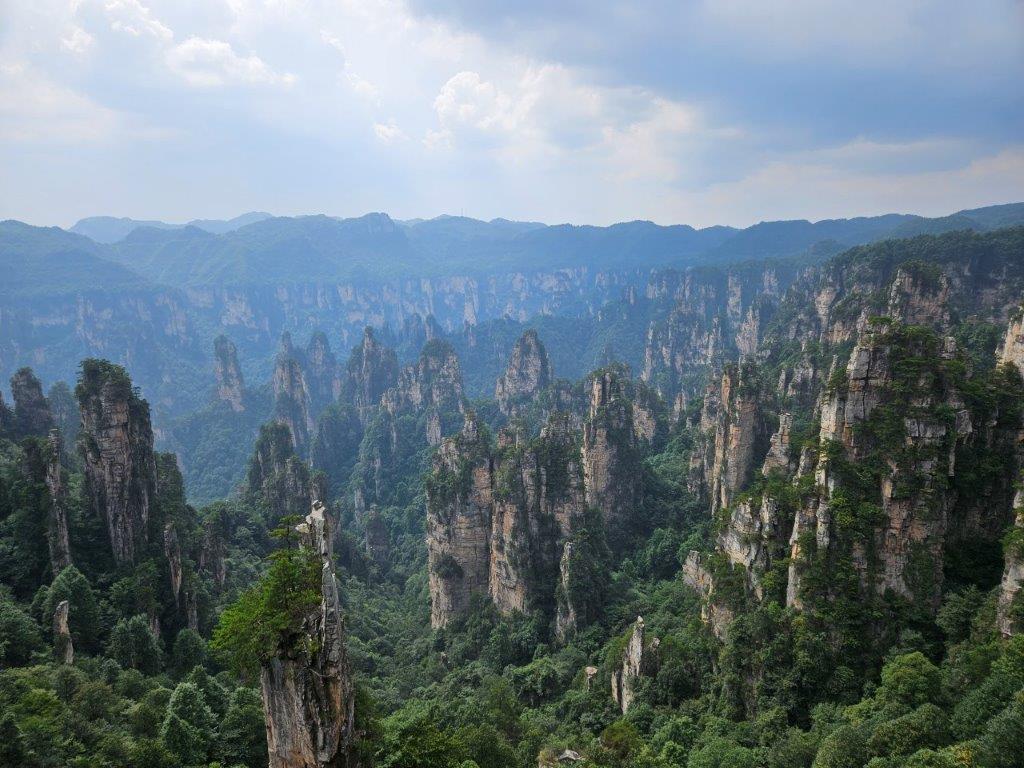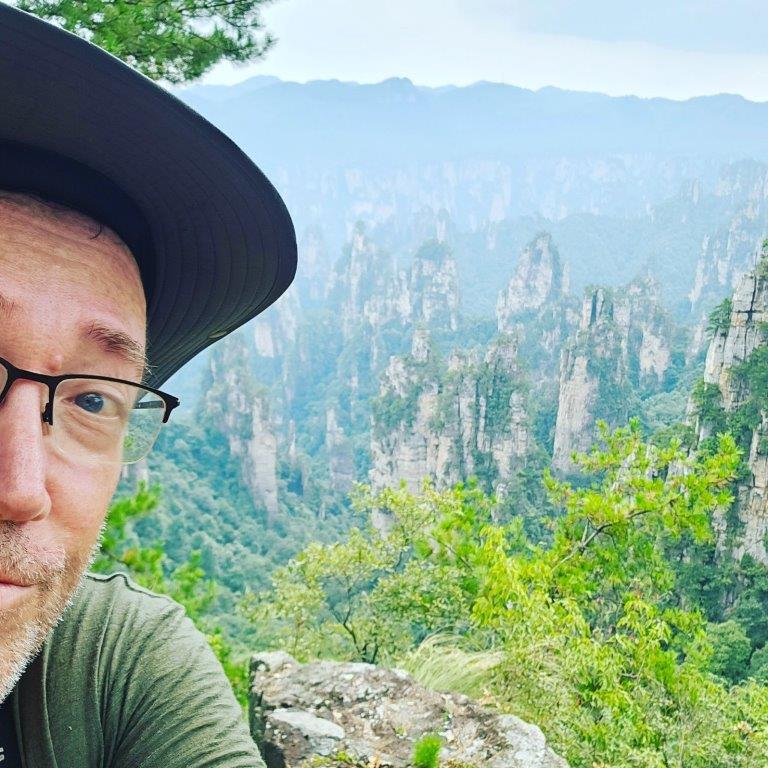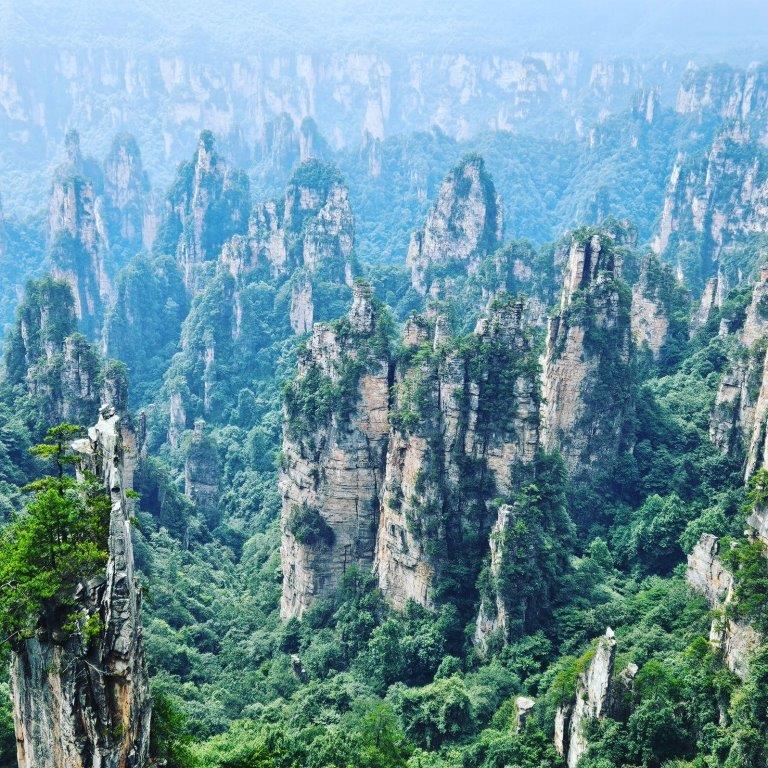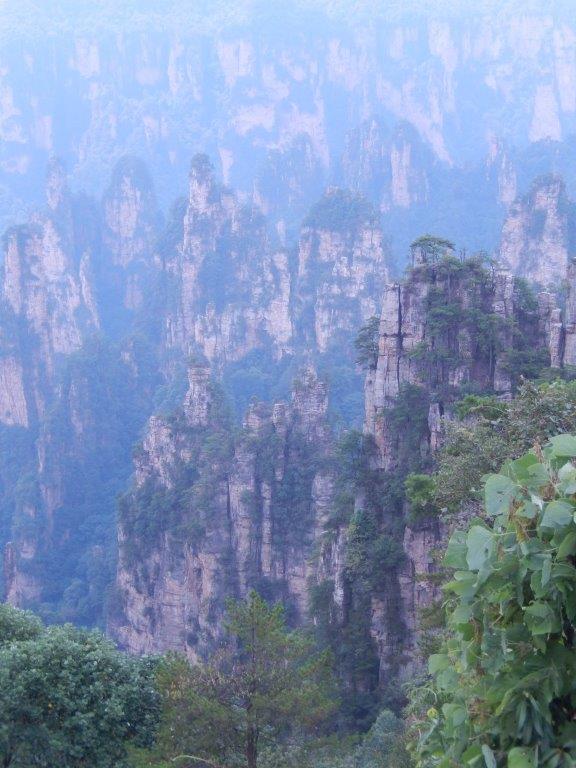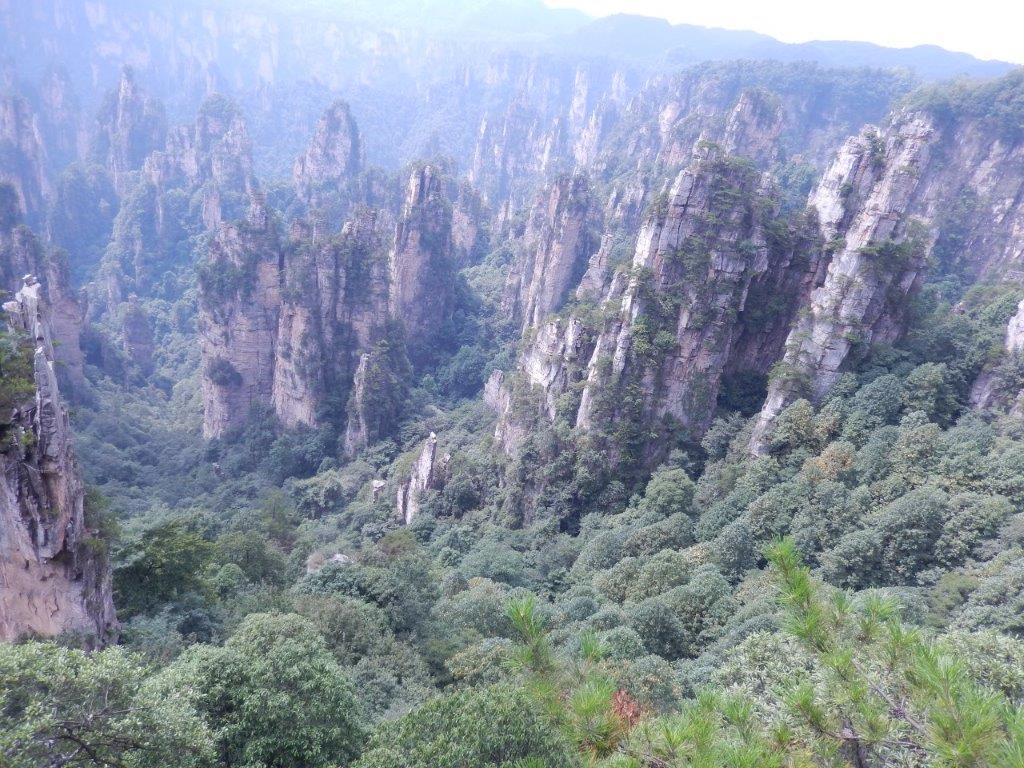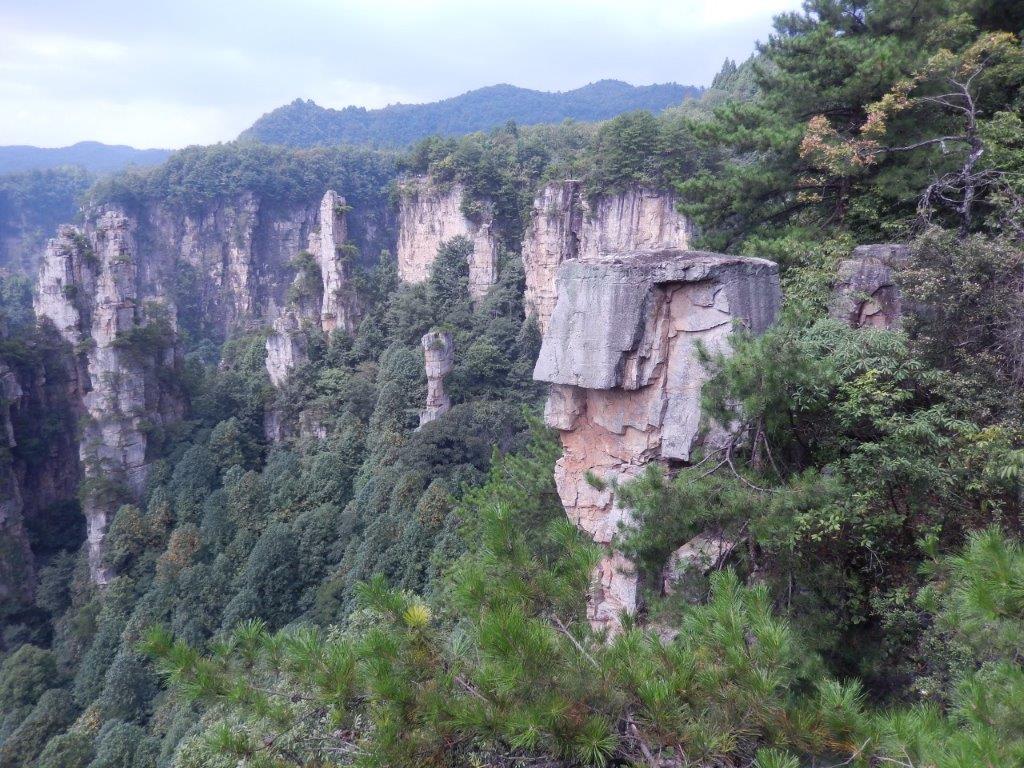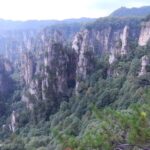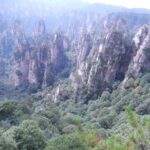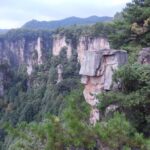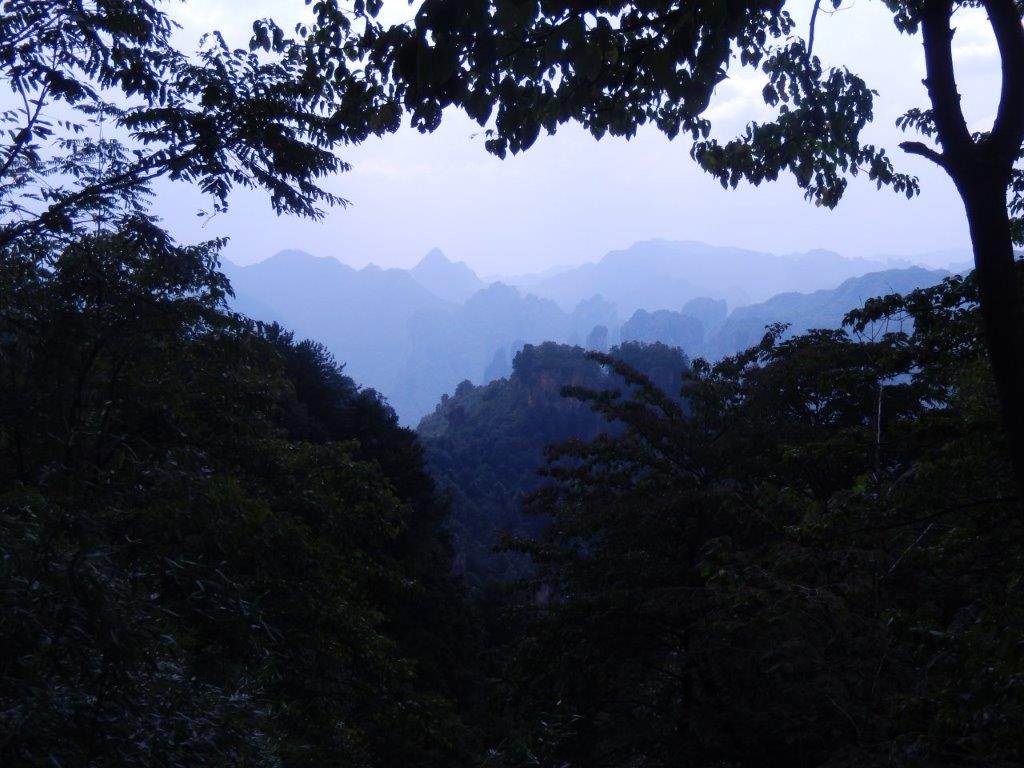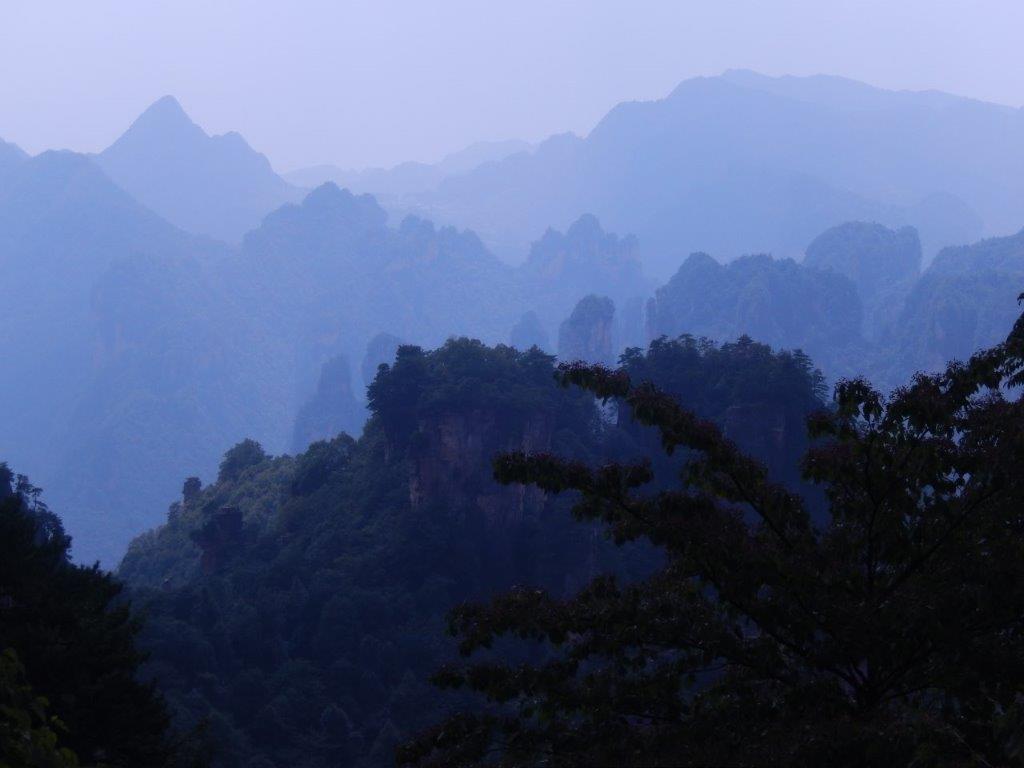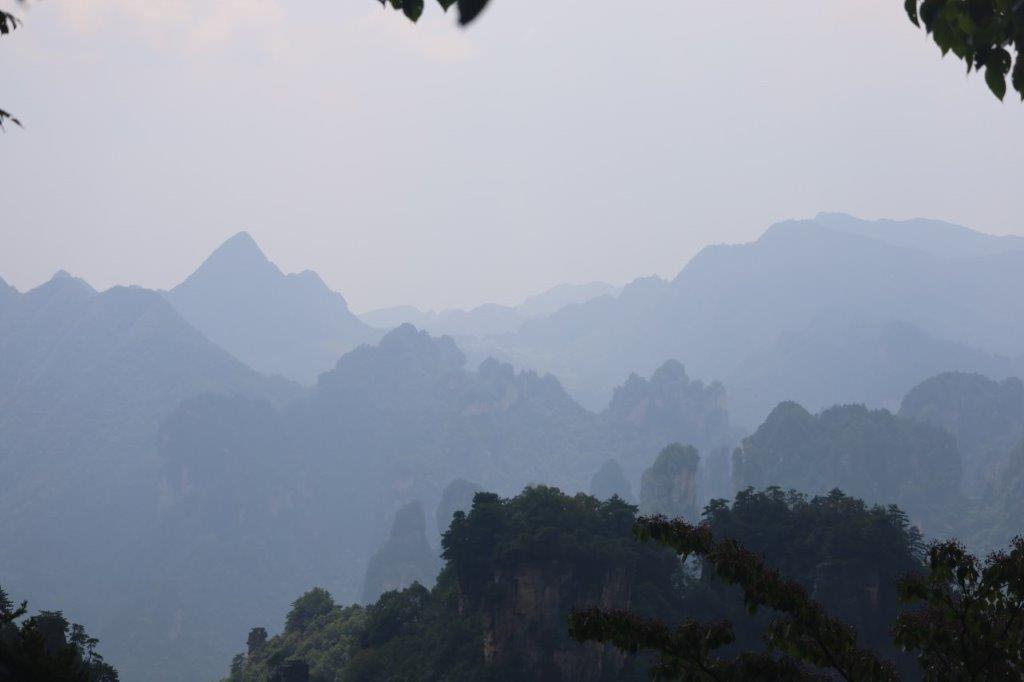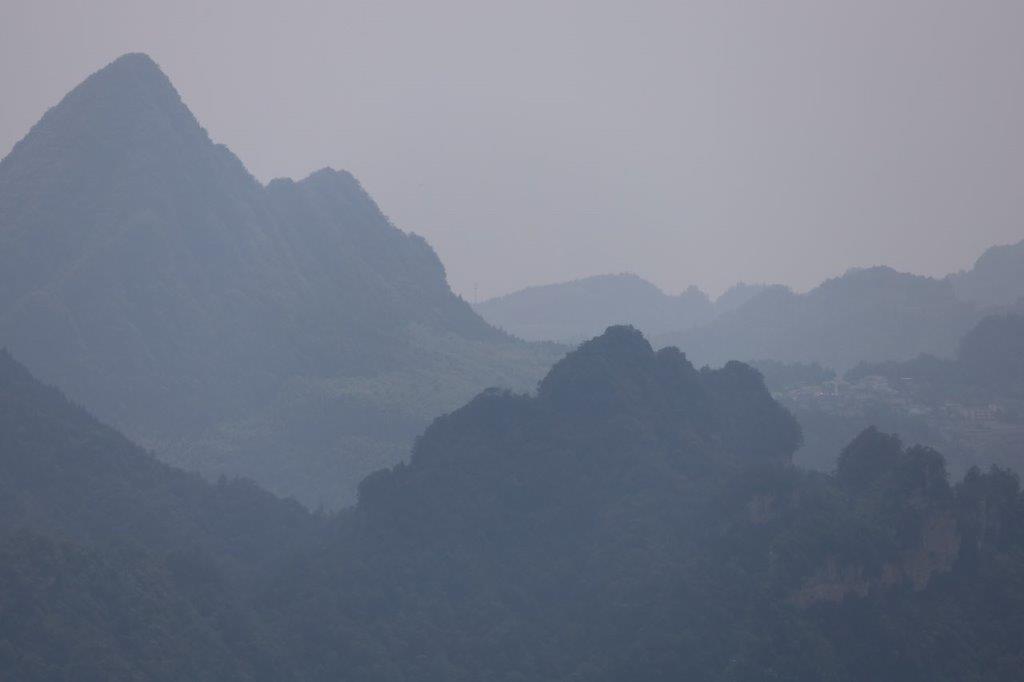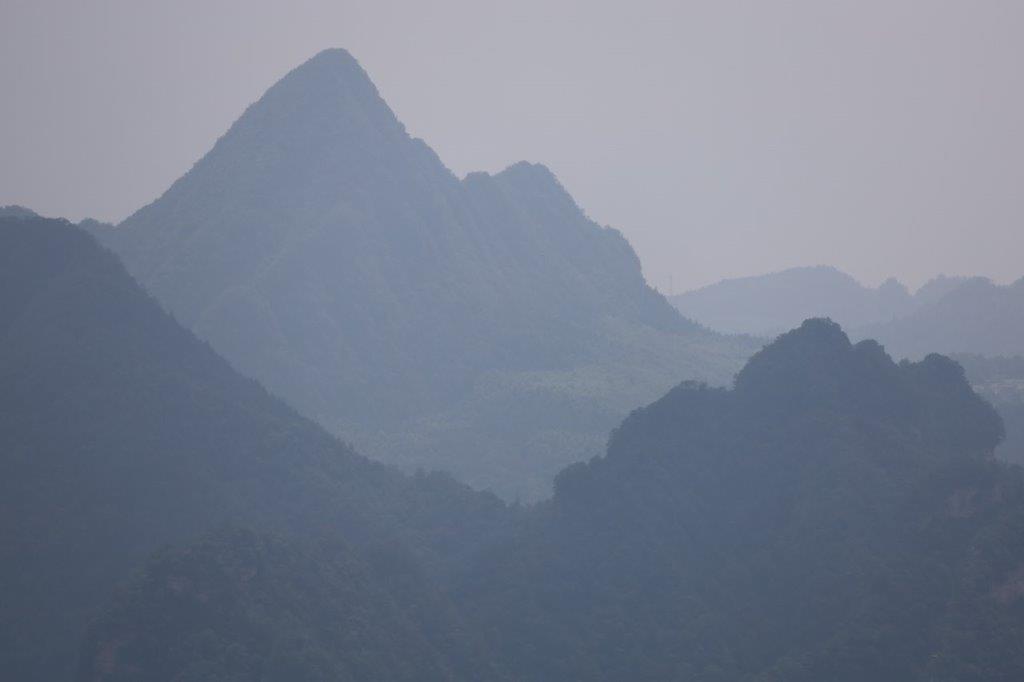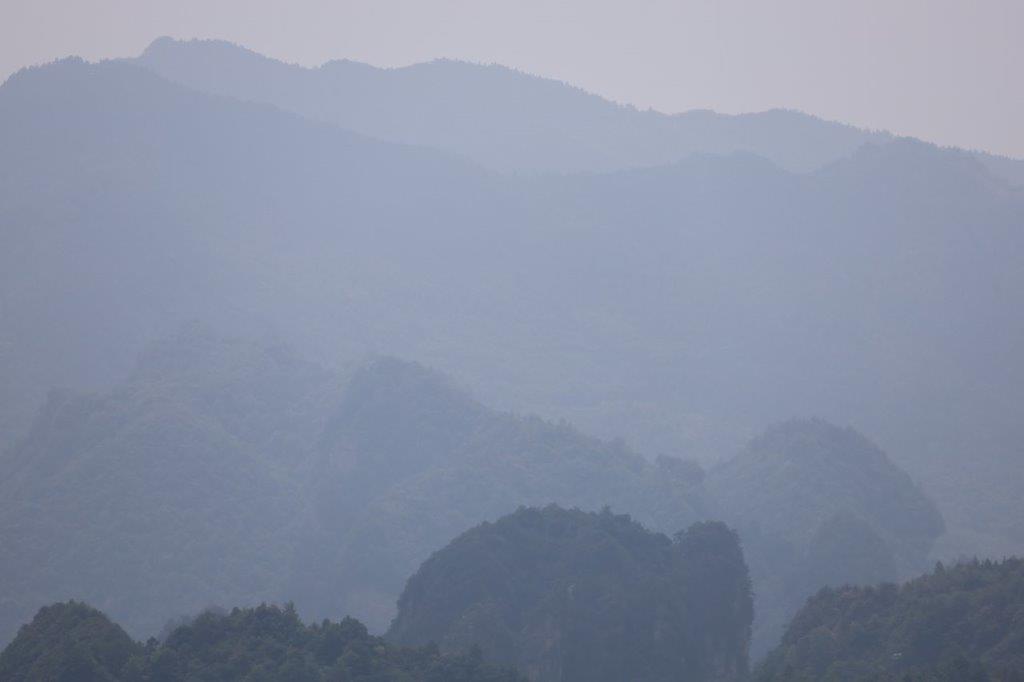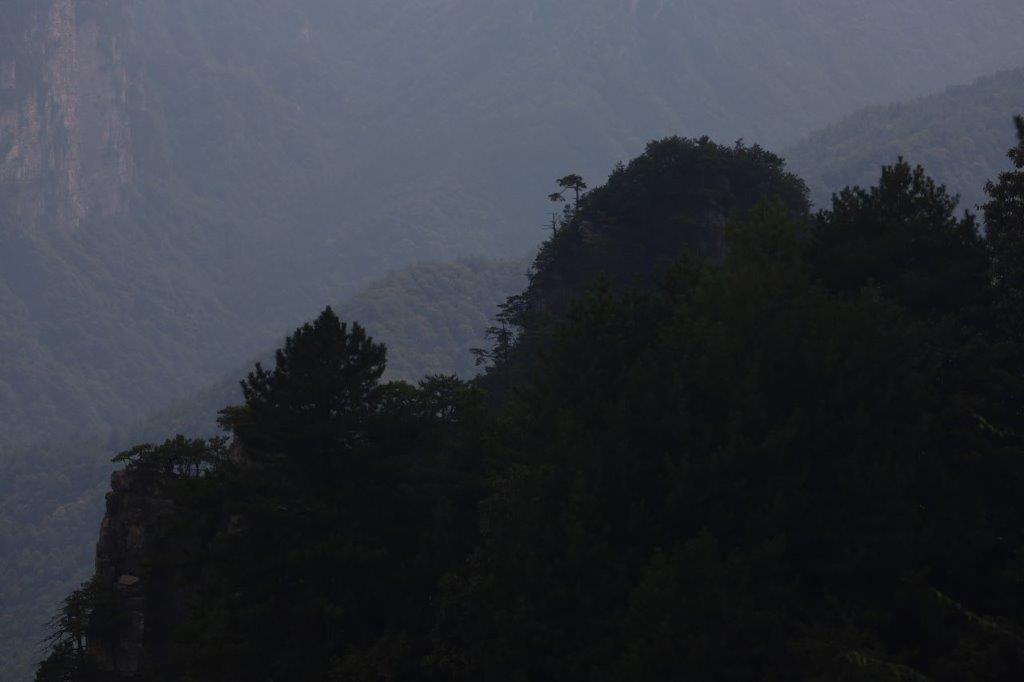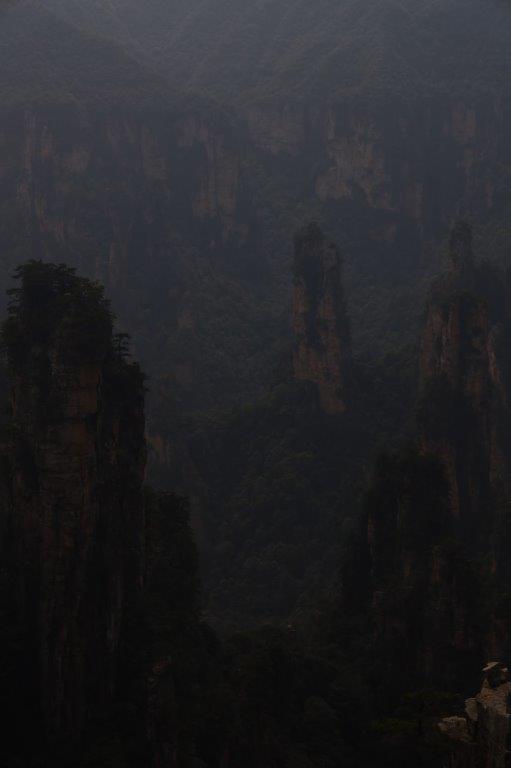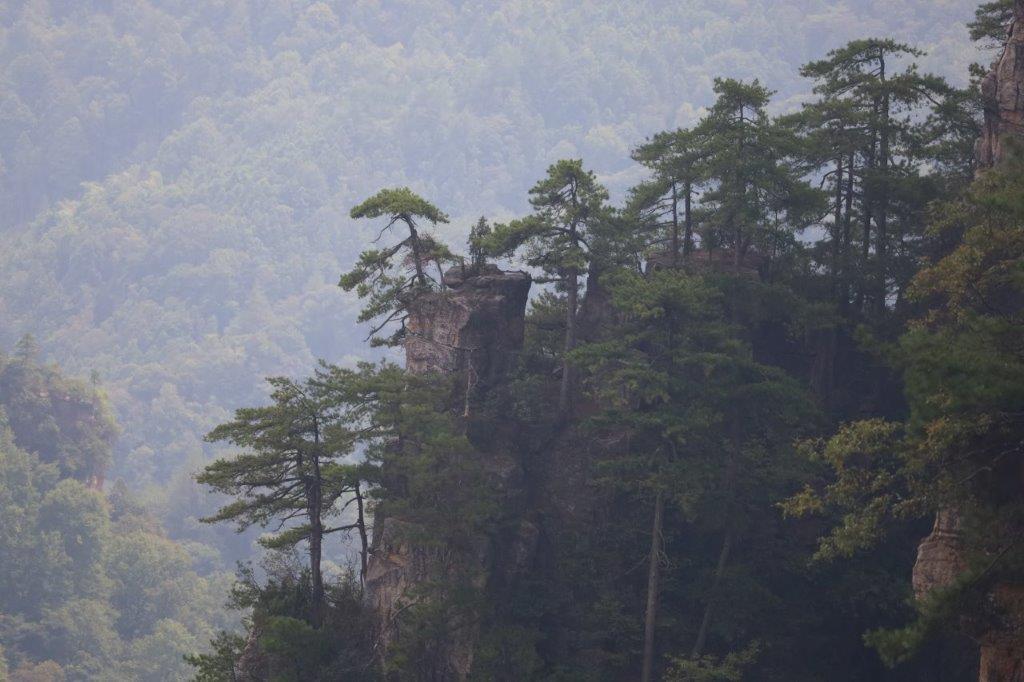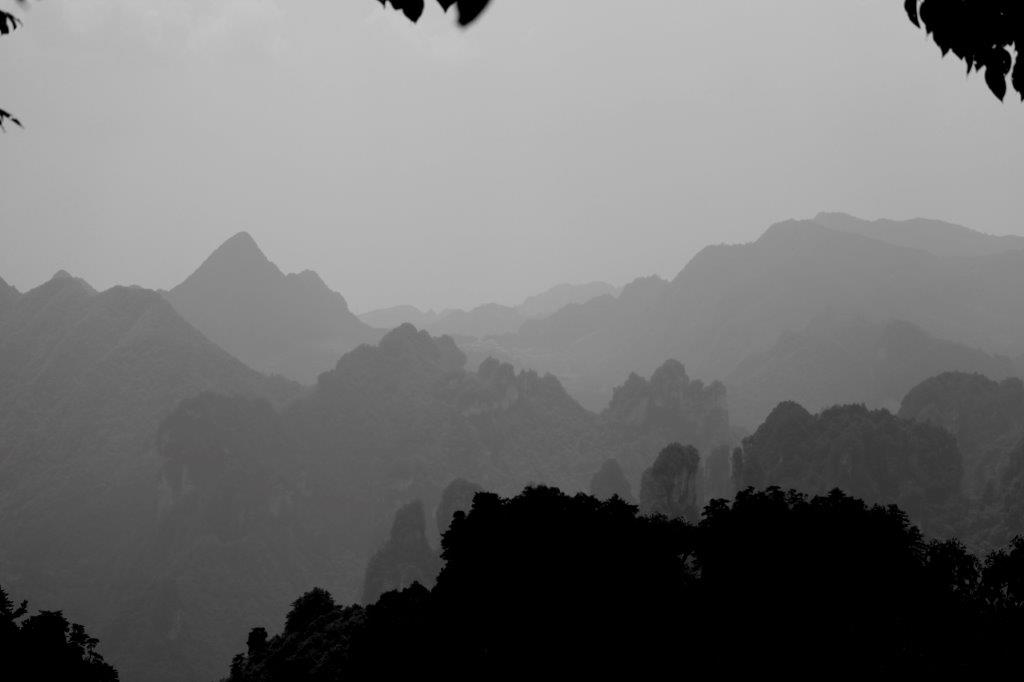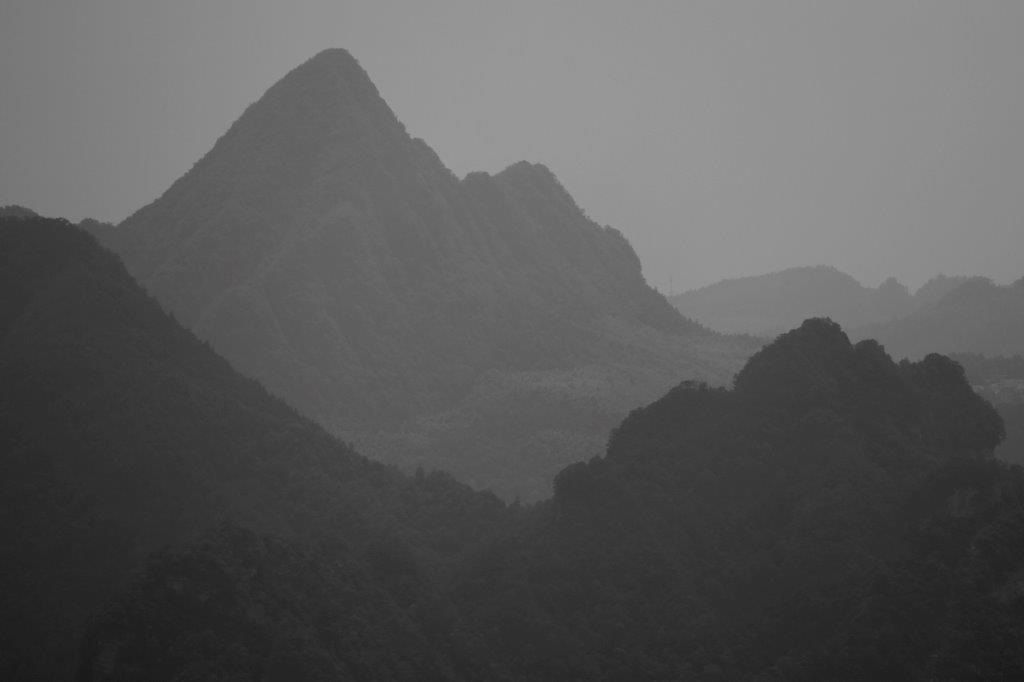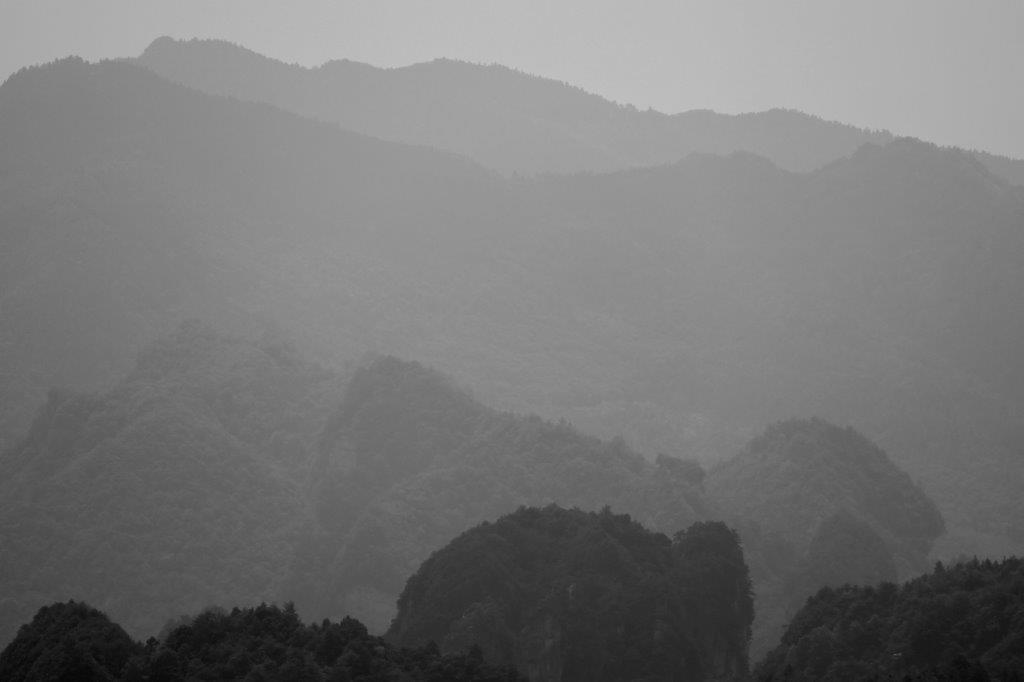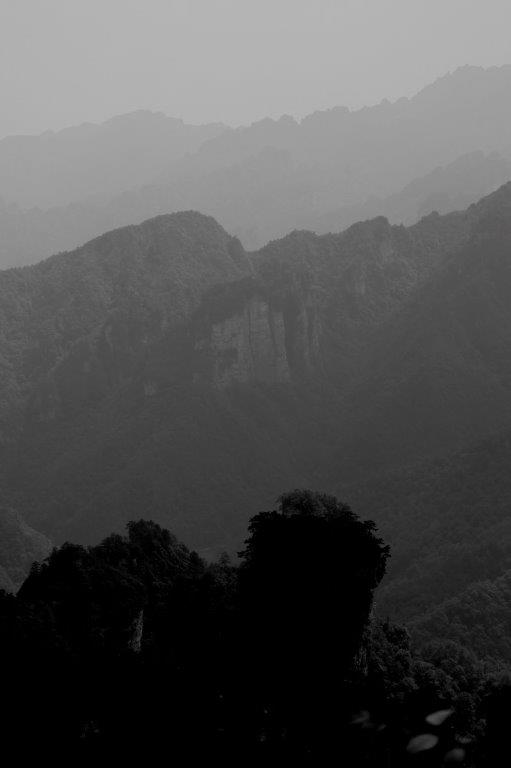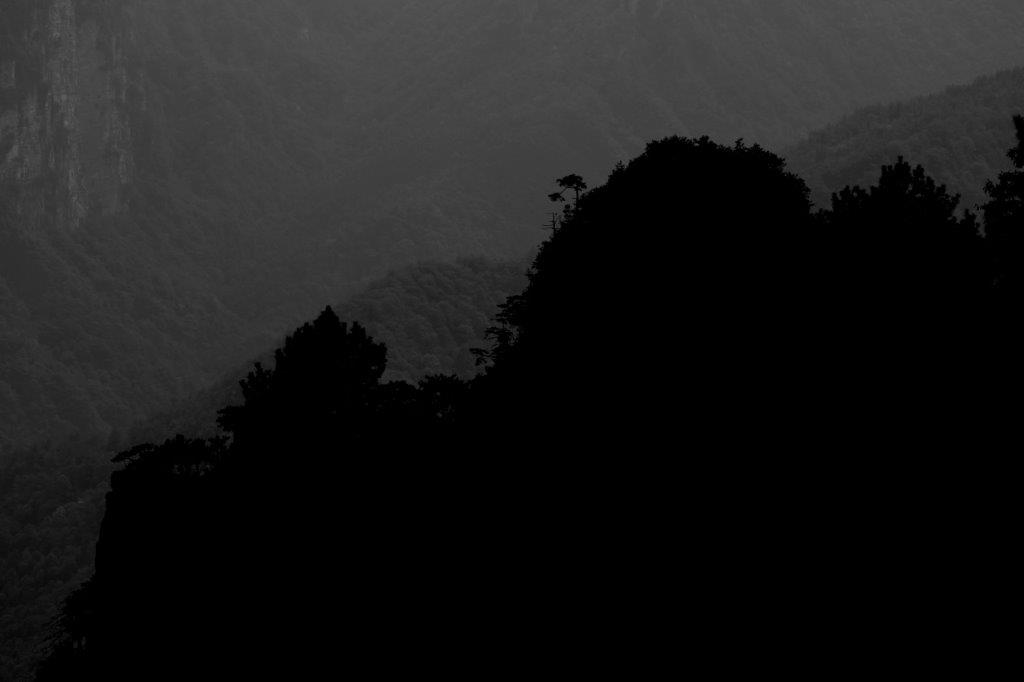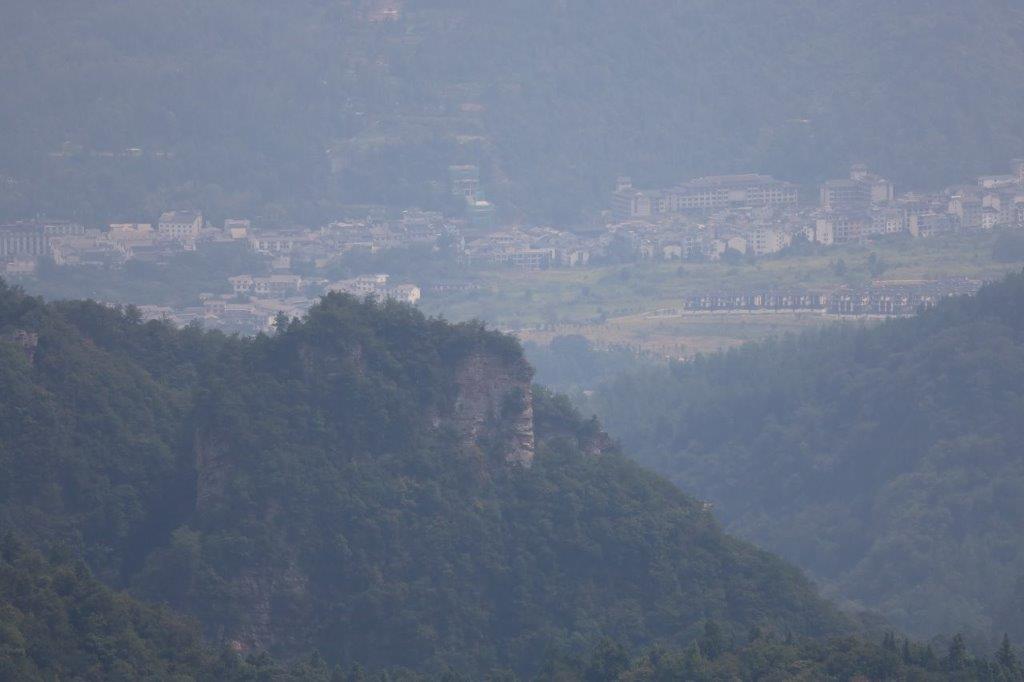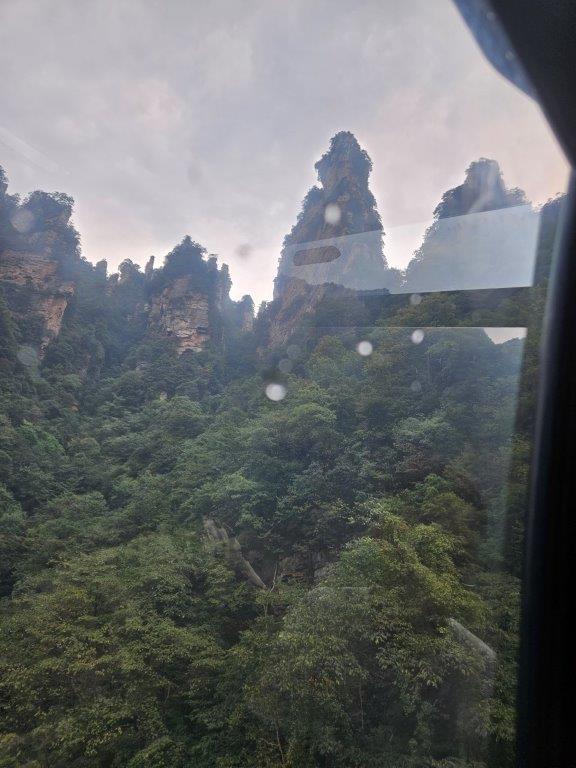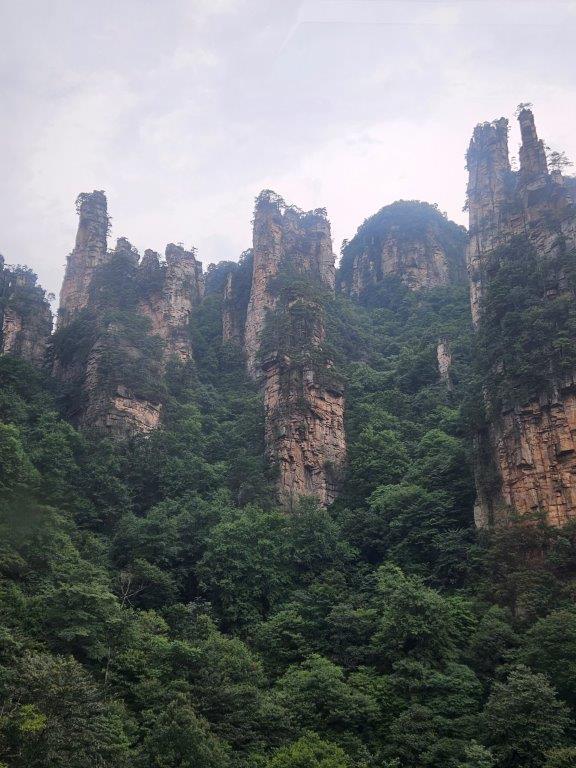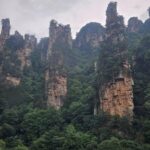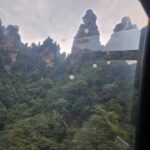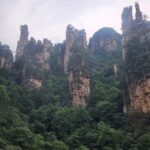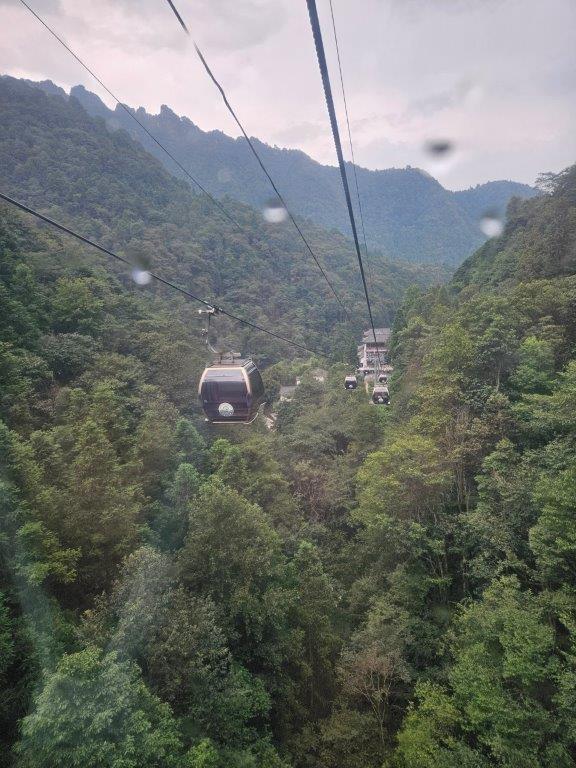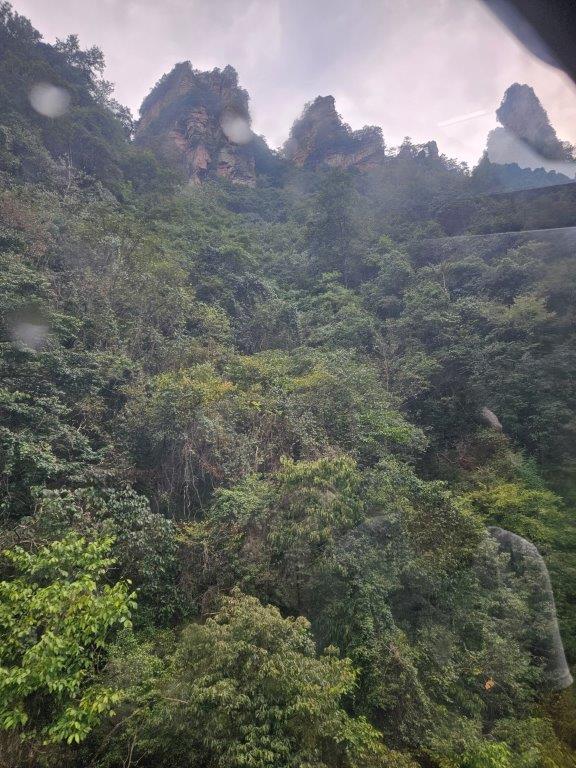16. China/Hunan: He Long Park and Tianzishan/Tianzi Mountain Nature Reserve: A Forest of Stone; including some more minimalist landscape photography trials (Walk 2) (Zhangjiajie National Forest Park/UNESCO World Heritage Site)
After having left the Bus, Gaby proposed to get something to eat at a roof covered food market.
Which again was a feast for the eyes, nose and rumbling stomach as well…
The chicken was really spicy and tasty 😋
Then The Wandelgek was led by Gaby to a Park which was all about the history of China in the days of the Long March of the Communist army, led by Mao. This was:
He Long Park
The Long March
The Long March (Chinese: 长征) was a military retreat by the Chinese Red Army and Chinese Communist Party (CCP) from advancing Kuomintang forces during the Chinese Civil War, occurring between October 1934 and October 1935. About 100,000 troops retreated from the Jiangxi Soviet and other bases to a new headquarters in Yan’an, Shaanxi, traversing some 10,000 kilometres (6,000 miles). About 8,000 troops ultimately survived the Long March.
Light red areas show Communist enclaves. Areas marked by a blue “X” were overrun by Kuomintang forces during the Fourth Encirclement Campaign, forcing the Fourth (north) and Second (south) Red Armies to retreat westward (dotted lines). The heavy dashed line is the route of the First Red Army from Jiangxi. The withdrawal of all three Red Armies ends in the northeast enclave of Shaanxi.
As you can see on the above map, there is a red communist controlled area around Hefeng in the north western of the Hunan province. From here troops fled south to join the Long March. Zhangjiajie and Wulingyuan are in that red area.
There were beautiful 3D depictions of soldiers marching through local villages…
…and of Marshall He Long giving orders and direction his troops…
After the defeat of the Red Army in Chiang Kai-shek’s Fifth Encirclement Campaign, on 10 October 1934 the CCP decided to abandon its Jiangxi Soviet and headquarters in Ruijin, Jiangxi. The First Front Red Army of some 86,000 troops headed west, traveling over the rugged terrain of China’s western provinces, including eastern Tibet. The Red Army broke several of Chiang’s blockades with heavy losses, and by the time it crossed the Xiang River on 1 December had only 36,000 men left. Its leaders, including Comintern military adviser Otto Braun and Moscow-trained Bo Gu, decided to take the troops through Hunan, but Chiang set up defenses to block their way. Mao Zedong, who was not a member of the Politburo, suggested going through Guizhou instead, which was accepted. On New Year’s Day 1935, the Red Army crossed the Wu River, and a week later held the Zunyi Conference, which reduced Soviet influence in the Politburo and established Mao’s position as de facto leader.
Employing guerrilla warfare, Mao maneuvered to avoid direct confrontation with Chiang’s forces and led the Red Army out of encirclements by local warlords. The First Front Army met the Fourth Front Army, led by Zhang Guotao, in Maogong, Sichuan; they disagreed on the route to take to Yan’an and split up. The First Front Army arrived in Yan’an on 19 October 1935 with about 8,000 survivors, ending the Long March. The Fourth Front Army was largely destroyed by Chiang and Ma clique attacks, and its remnants joined the Second Front Army led by He Long. All three armies met on 22 October 1936.
Mao’s leadership during the retreat brought him immense prestige and support among many within the otherwise-shattered Communist Party. It marked the beginning of his long ascent to primacy, and would be featured heavily in his public image, through the founding of the People’s Republic.
So who was this:
Marshall He Long
He Long (Chinese: 賀龍; March 22, 1896 – June 9, 1969) was a Chinese Communist revolutionary and a Marshal of the People’s Republic of China. He was from a poor rural family in Hunan, and his family was not able to provide him with any formal education. He began his revolutionary career after avenging the death of his uncle, when he fled to become an outlaw and attracted a small personal army around him. Later his forces joined the Kuomintang, and he participated in the Northern Expedition.
He rebelled against the Kuomintang after Chiang Kai-shek began violently suppressing Communists, when he planned and led the unsuccessful Nanchang Uprising. After escaping, he organized a soviet in rural Hunan (and later Guizhou), but was forced to abandon his bases when pressured by Chiang’s Encirclement Campaigns. He joined the Long March in 1935, over a year after forces associated with Mao Zedong and Zhu De were forced to do so. He met with forces led by Zhang Guotao, but he disagreed with Zhang about the strategy of the Red Army and led his forces to join and support Mao.
After settling and establishing a headquarters in Shaanxi, He led guerrilla forces in Northwest China in both the Chinese Civil War and the Second Sino-Japanese War, and was generally successful in expanding areas of Communist control. He commanded a force of 170,000 troops forces by the end of 1945, when his force was placed under the command of Peng Dehuai and He became Peng’s second-in-command. He was placed in control of Southwest China in the late 1940s, and spent most of the 1950s in the Southwest administering the region in both civilian and military roles.
He held a number of civilian and military positions after the founding of the People’s Republic of China in 1949. In 1955, his contributions to the victory of the Chinese Communist Party were recognized when he was named one of the Ten Marshals, and he served as China’s vice premier.
He did not support Mao Zedong’s attempts to purge Peng Dehuai in 1959 and attempted to rehabilitate Peng. After the Cultural Revolution was declared in 1966, he was one of the first leaders of the PLA to be purged. He died in 1969 when a glucose injection provided by his jailers complicated his untreated diabetes.
Gaby told me that most visitors patted the horses rear because it was believed to bring luck. So …
After being purged, He was placed under indefinite house arrest for the last two and a half years of his life. He described the conditions of his imprisonment as a period of slow torture, in which his captors “intended to destroy my health so that they can murder me without spilling my blood”. During the years that he was imprisoned, his captors restricted his access to water, cut off his house’s heat during the winter, and refused him access to medicine to treat his diabetes. He died in 1969 after being hospitalized for the severe malnutrition that he developed while under house arrest. He died soon after being admitted to hospital, after a glucose injection complicated his chronic diabetes.
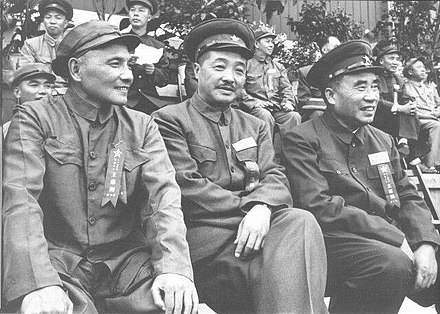
1949, Deng Xiaoping, He Long, and Zhu De attended the opening ceremony of the 25th Anniversary Sports Meeting of the Army’s “August 1st” Army Day.
He was posthumously partially rehabilitated by Mao in 1974, then fully rehabilitated after Deng Xiaoping came to power in the late 1970s.
A stadium in Changsha was named after him in 1987.
I love it when my travels are a combination of beautiful nature, delicious food, beautiful old architecture, theater, music, legends/stories and … history. So far I was not disappointed 😍.
Near the statue was a small folklore all souvenir market where quite large red resin and carved wooden statues of all sorts were sold.
Then we walked into the area where the
Tianzishan Nature Conservatory
was.
Tianzi Mountain (Chinese: 天子山) is a mountain in Zhangjiajie in the Hunan Province of China, close to the Suoxi Valley in South Central China. Before the Ming Dynasty, Tianzi Mountain was known as “Qingyan Mountain” because of its green stones. The mountain is named after the early Ming dynasty farmer Xiang Dakun of the Tujia ethnic group, who led a successful local farmers’ revolt and called himself “Xiang Wang Tianzi”, meaning son of Heaven and which is the traditional epithet of the Chinese emperor.
The highest pillar of Tianzi Mountain is Kunlun Peak with an elevation of 1,262.5 metres (4,142 ft 1 in) and the lowest pillar is Shilanyu with an elevation of 534 metres (1,752 ft). Tianzi Mountain is a part of the Wulingyuan Scenic Area and Zhangjiajie National Forest Park and was added to the UNESCO World Heritage List in 1992.
The girl Holding a Bouquet or Fairy Presenting Flowers
This Quartz sandstone pillar formation, from a specific angle does actually resemble a girl holding flowers in front of her. It could be a fairy too.
Beneath is an angle where you can actually see something resembling a face with eyes, nose and mouth above a narrower neck.
In the Huangshan mountains the were many of these rock formations with creative names.
This large area was surrounded by a mountain “wall” on top of which were trails and roads and viewing platforms and stairs.
The quartz sand stone pillars were awesome, but not as many as in the Hallelujah Mountain area of Yuanjiajie….
… or so it seemed at first …
Pic checken
… because after passing through another bend in the pathway …
😍😍😍😍😍😍😍😍😍😍😍😍😍😍😍😍😍😍
This was even better than the Hallelujah Mountains …
Gaby asked me for my preference and I remember telling her I preferred this one. She said most other people chose the Hallelujah Mountains, but even in retrospect, looking at these photo’s now, I still think this area is the best. I just love this soooo much!!!:
😍😍😍😍😍😍😍😍😍😍😍😍😍😍😍😍😍😍
These actually are called: “The Emperor’s Brushes“, which again refers to the chinese landscape paintings which I earlier discussed in this blogpost:
I’m not going into that again now, although I will go into minimalist landscape photography some more soon.
The Imperial Writing Brush Peaks
Imperial Writing Brush Peak, also called 御笔 峰 (yù bǐ fēng) in Chinese, is located in a valley west of Tianzi Pavilion. As one of the best attractions on Tianzi Mountain, the Imperial Writing Brush Peak is widely regarded as a landmark scene of Wulingyuan Sandstone Peaks, as well as a logo of Zhangjaijie City, and it continues to appear in various media and publicity materials at home and abroad.
Standing at the observation platform near Tianzi Pavilion, you can see the full picture of the Imperial Writing Brush Peak. With a height of more than 100 meters, it has several stone peaks which are juxtaposed.
It is said that these are the stone peaks formed by the writing brush discarded here when King Xiang was defeated.
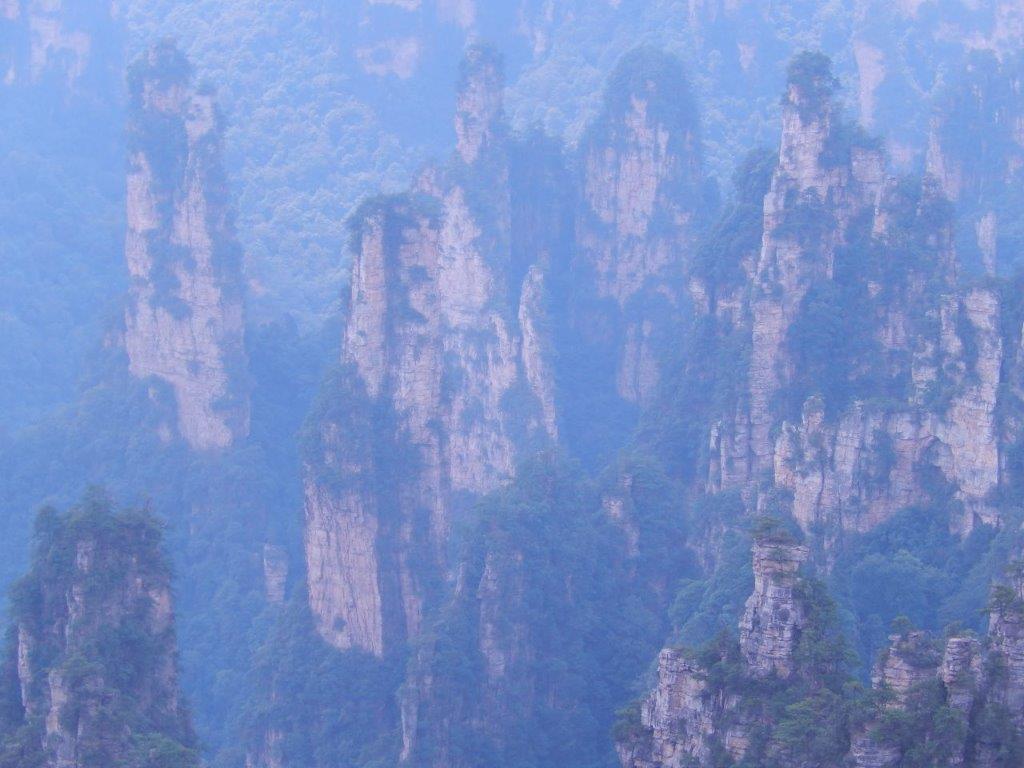 Dozens of rugged peaks in the valley protrude into the blue sky. The stone peak on the right is like an inverted pen, and the stone peak on the left is like a river or mountain.
Dozens of rugged peaks in the valley protrude into the blue sky. The stone peak on the right is like an inverted pen, and the stone peak on the left is like a river or mountain.
This scene changes a lot, the sunshine is shining brightly, the clouds and fog are looming from time to time.
In fact, this is the magical skill of nature, which is scientifically the result of years of weathering, erosion, and cutting.
After the rain is clear, the peaks are surrounded by clouds and mist as if sinking and floating, this place is known as “a fairy-land”.
Hence the earlier mentioned Fairy Presenting Flowers.
The views were simply breathtaking …
These are the views that I saw earlier in chinese photographs and paintings, like e.g. those of Sun Jianhua …
Landscapes like these inpire me to think about how to photograph them best …
…or film them best …
Minimalist Photography in China
As well as shown before in an earlier blogpost about Huangshan Mountain and Minimalist photography, Zhangjiajie/Wulingyuan is also an ideal location for minimalist photography and also Chinese landscape painting. Beneath are some photo’s (still in color) which were like tests for black and white minimalist photography…
The picture below in itself is quite beautiful, with the trees and foliage framing the mountains that disappear in the distance …
But it can do without the frivolous foliage to make it more ZEN, more Tranquile….
The bushes and trees in front are an unneccessary addition as well …
… and finally we start to get to the core …
Maybe this one is even better ? …
Or more mountains, less sky? ….
I felt like the ones including trees should be darker …
… and this one is as dark as I could get it without lossing all detail and layering ….
I felt like this one could become a great silhouette like photo, after some fine tuning …
Beneath are the end results in black and white, which I think is adding even more to the minimalist idea behind these photo’s. Most minimalist photo’s are trying to reduce distractions and create focus and color is also regarded as a distraction so minimalist photography often uses a minimal colour palette like e.g. grayscales or just no color at all. Sometimes a single color is permitted to catch the focus of the viewer.
My approach to get minimalist style photo’s, was quite different from the ones at Huangshan. This was because of necessity. At Huangshan Mountain there had been some mist, but overhere it had been much warmer and there was no mist at all, meaning that the support which the mist provides in leaving superfluous distractions out of the frame was gone and it was more difficult to create photo’s which do not show to much detail. Zooming in is one way to do it and zooming in on silhouette like scapes, like e.g. mountain layers disappearing in the distance …
Hope you enjoyed my view and first trials on minimalist photography.
Looking down from Tianzi Mountain
Before going down there was a brief shower (my first rain in China)…
Beneath a small town was visible which was very probably Wulingyuan Town, which was located quite near the exit of the cable car…
The Wandelgek was now going to the:
Tianzishan Cable car
From the upper cable car station he took a cable car to descend from Tianzi Mountain.
That was quite a beautiful cable car ride. In the top area are the high towering quartz sandstone pillars, erected against the sky …
Next the cable car passes the lower station and descends further …
After the short showers tge windows of tge cable car had becime wet too …
Beneath are some moments of flying through the Quartz Sandstone Pillars, down toward Wulingyuan Town …
After leaving the cable car, Gaby informed the driver we were ready to return to the hotel.
